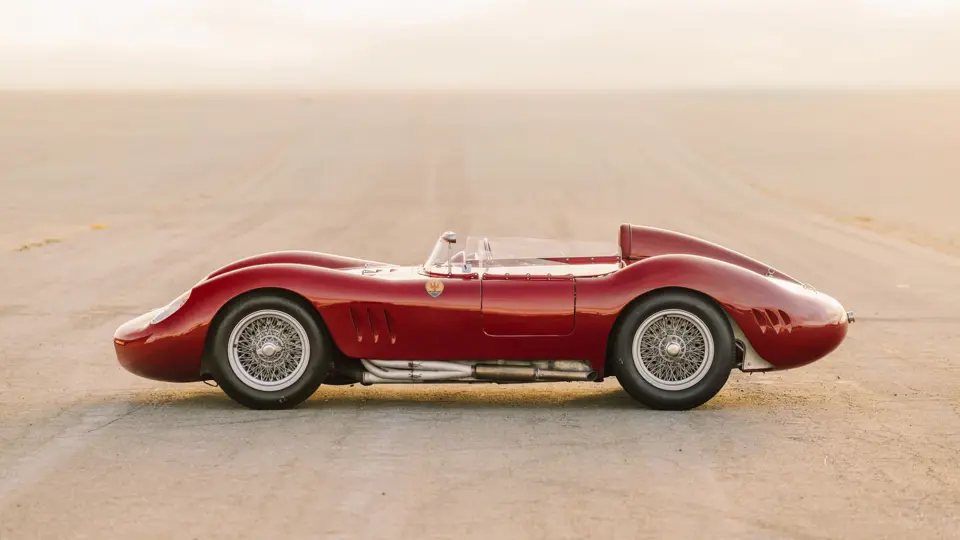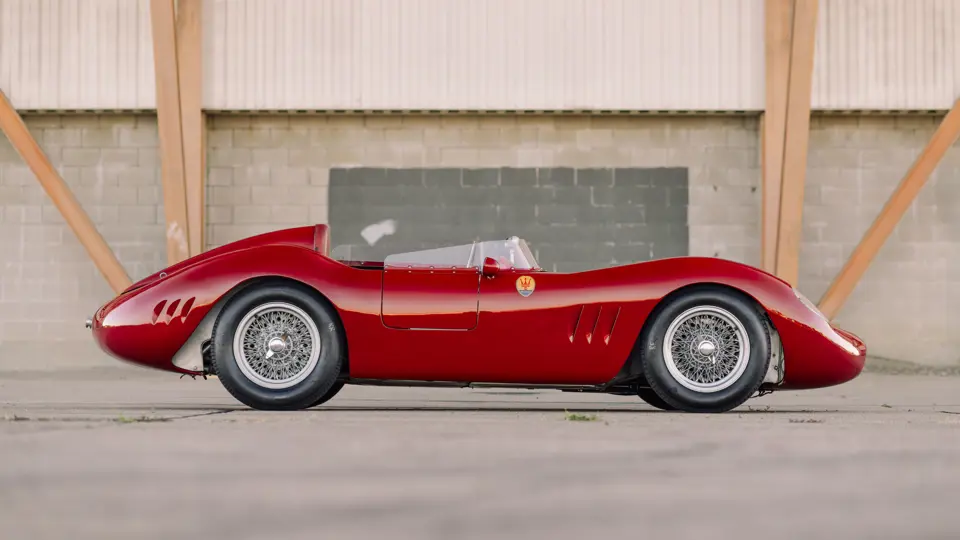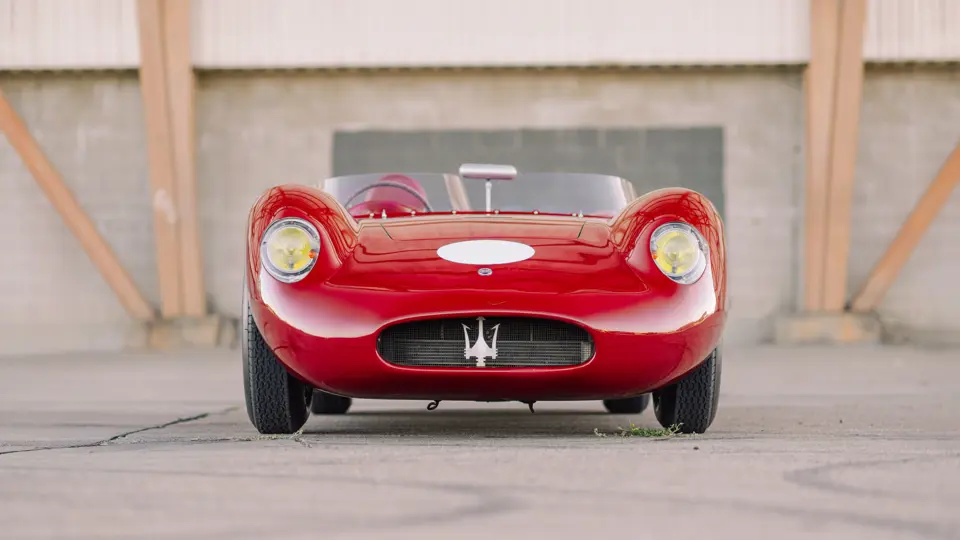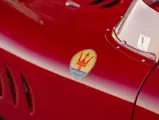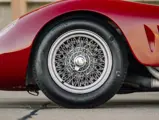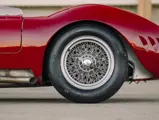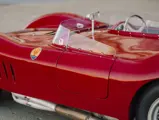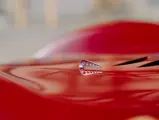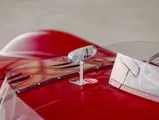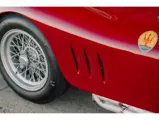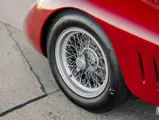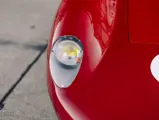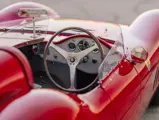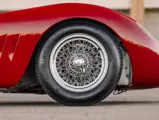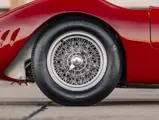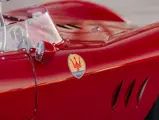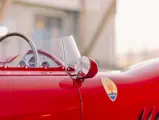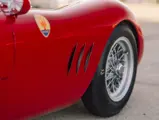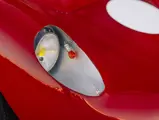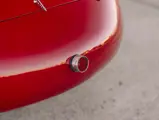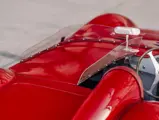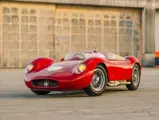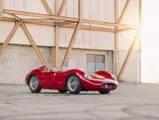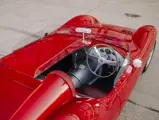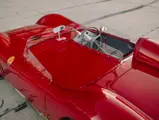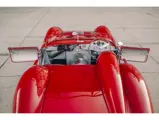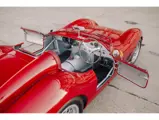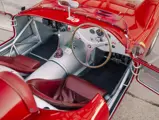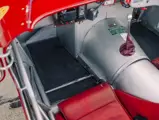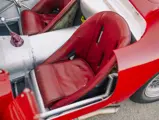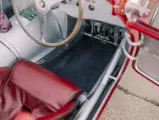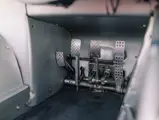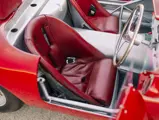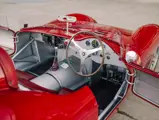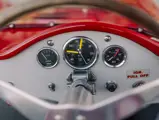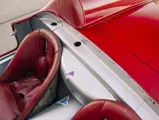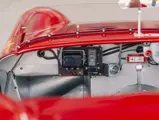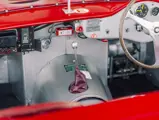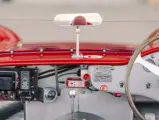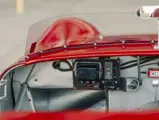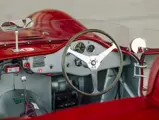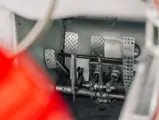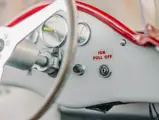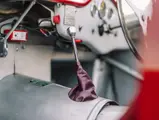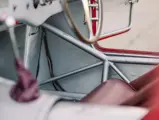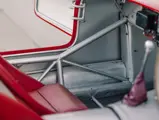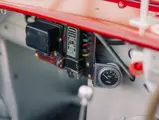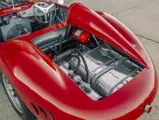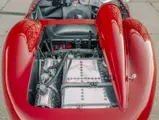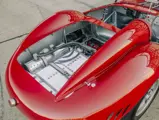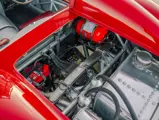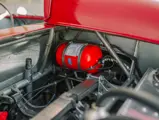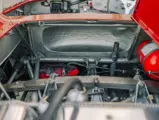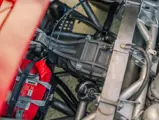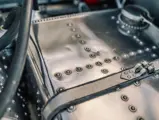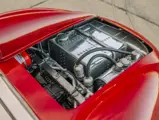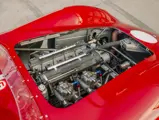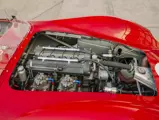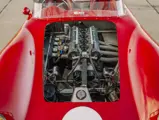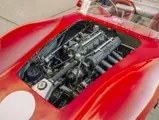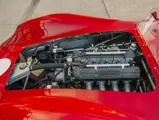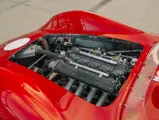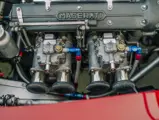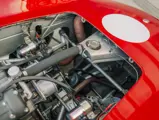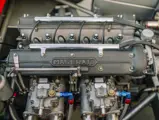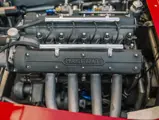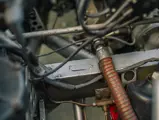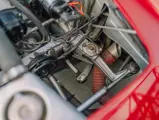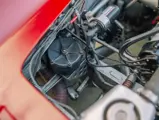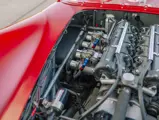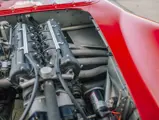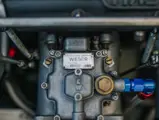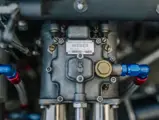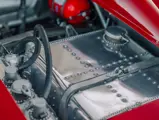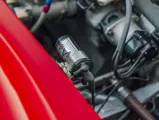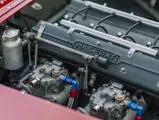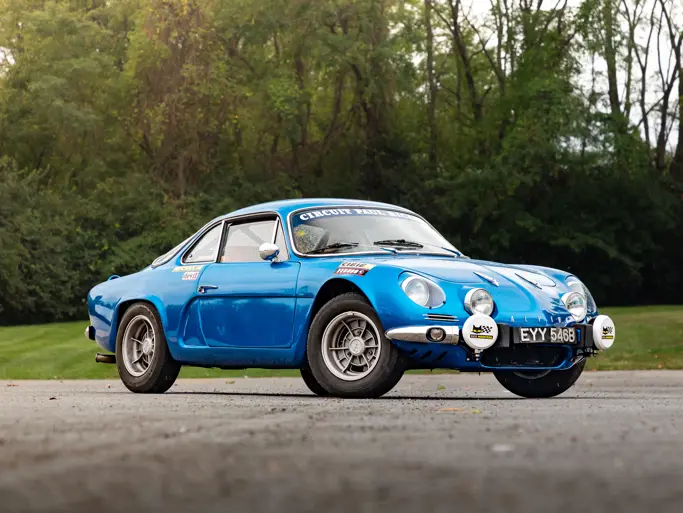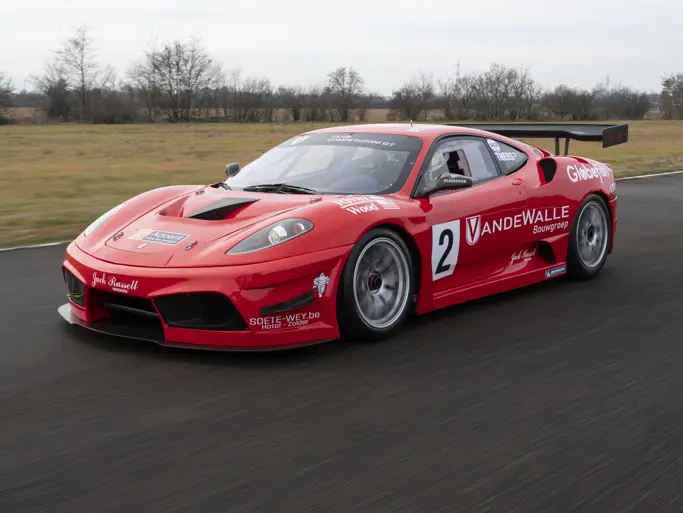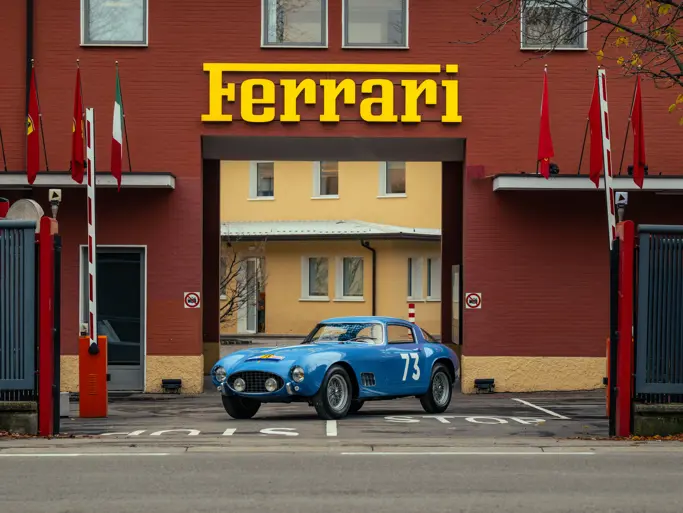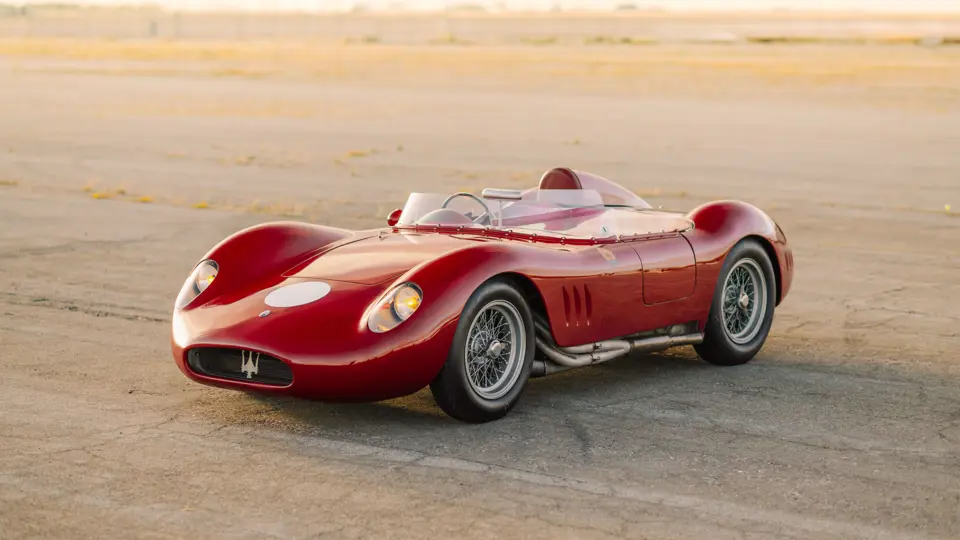
1957 Maserati 200SI by Fantuzzi
{{lr.item.text}}
$2,800,000 - $3,200,000 USD | Not Sold
{{bidding.lot.reserveStatusFormatted}}
- Approximately the 23rd of 28 200/250-spec chassis built
- Class winner (3rd overall) at the 1957 Giro di Sicilia; numerous top-three finishes in SCCA racing by privateers, including future Chaparral maestro Jim Hall
- Accompanied by matching-numbers engine; currently fitted with purpose-built 2.5-liter cast-alloy twin-cam racing engine
- Multi-time veteran of the Mille Miglia Storica and the Monterey Historics; exhibited at the 2024 Pebble Beach Concours d’Elegance
- Documented with factory build sheet and delivery sheet copies, manufacturer’s certificate of origin, and FIA Historic Technical Passport
MODENA’S NEW INLINE FOUR
In 1955, Maserati introduced a new six-cylinder engine that was quickly modified into two different twin-plug four-cylinder variants displacing 1.5 and 2 liters, resulting in the respective 150S and 200S sports-racing models. Both cars were clothed in sensuous open coachwork by Medardo Fantuzzi characterized by sweeping fenders, a protruding small-mouth grille, and a trailing head fairing, endowing the cars with sensational aesthetics.
The 200S was soon piloted to a 2nd-place finish at the 1956 Gran Premio di Bari and an overall victory at the Gran Premio di Roma by Jean Behra, while Stirling Moss and Cesare Perdisa finished 2nd overall at the 1956 Supercortemaggiore at Monza, spearheading a productive period for the new models. In 1957, new Appendix C regulations compelled Maserati to modify the 200S with a full-width windscreen, two functioning doors, and provision for a spare wheel, after which the model was rechristened as the 200SI (with the suffix denoting the Sport Internazionale racing series). Late-production examples featured 2.5-liter engines and were renamed as the 250S, after which many of the original 2-liter cars were privately upgraded to 250-specification engines.
By the end of production in 1957, approximately just 28 examples of the 200 and 250-spec chassis had been built, and these cars remain prized by collectors for their high-revving, torque-happy performance and voluptuous coachwork cues. Ideal for enjoyment at vintage racing events, these unique spyders represent a golden age in the evolution of the Trident, when boutique hand-built production resulted in some of the most striking European sports-racers ever conceived.
COMPETITION SUCCESS, FROM SICILY TO THE SCCA
Claiming important period racing history, and benefiting from a comprehensive restoration and vintage racing participation through a 17-year ownership, this beautiful 200SI is a particularly desirable example. Numerically, chassis number 2425 is approximately the 23rd of 28 cars built. According to documentation from Maserati Classiche, including a certificate of origin, and factory build sheet and delivery sheet copies, chassis number 2425 was originally equipped with a 2-liter engine and completed in July 1957. The spider was slated for delivery to the official American distributorship, Maserati Corporation of America.
Despite these records, this 200SI has long been understood to be the car driven to a class win (3rd overall) by Giorgio Scarlatti at the Giro di Sicilia of April 1957. The victory was under the aegis of the Scuderia Centro Sud, the personal team of the Italian (central and south region) Maserati dealer Guglielmo Dei. The 200SI was then again entered by the Scuderia Centro Sud at the GP Cadours in September, where André Loens roared to overall victory, besting a host of Porsche 550 RS and Ferrari 500 TR examples.
Following these European events, the Maserati was exported to the US, having been purchased by Dick Hall’s Carroll Shelby Sport Cars, Inc., of Dallas, Texas. Dick Hall was the older brother of Jim Hall—the onetime Texan privateer who would soon leap to greater prominence with his celebrated Chaparral racecars—and his sales agency retained erstwhile business partner Carroll Shelby’s name for its promotional value, though Shelby’s involvement was apparently minimal.
The elder Hall frequently promoted the cars he sold by having Jim race them in SCCA events. His coterie of Maseratis included at least four of the reported nine 200SI examples that were directly distributed to the US as new cars.
In October 1957, at the Hourglass Air Force Base in San Diego, Jim Hall ran 2425 to a 2nd-in-class finish (3rd overall) during the preliminary race, and another 2nd in class (5th overall) a day later in the main race. In early November at the SCCA national event at Palm Springs, the Texan again finished 2nd in class (8th overall) before early retirements at Laguna Seca and Riverside over the next few weeks.
In 1958 the Maserati was sold to Lieutenant-Colonel Robert “Bob” Kuhn, an avid SCCA privateer who gradually ascended through an interesting array of racing steeds, starting with an MG TD and then successively working his way through a Siata 208S, an Abarth, and an AC Bristol. Despite being one of the niche’s lesser-known names, Kuhn was the centerpiece of a human-interest story in the July 1957 issue of Sports Illustrated magazine titled “Weekend Heroes On Wheels.” His exploits in 2425 included a 6th overall finish at Lime Rock in September 1958, and a 5th overall finish at the Formula Libre race at Watkins Glen three weeks later.
By 1962 the Maserati was acquired by another racing privateer, Otto Klein, a US Navy veteran who would later go on to co-author the Clean Air Act. Per the recollections of Klein’s son, Jeff, Jim Hall was again part of the transaction—which took place at Wisconsin’s Road America—with Hall either the seller of the car, or acting as a broker. Klein campaigned the 200SI on numerous occasions over the following three years, finishing as high as 1st in class at the Wilmot Hills SCCA Regional event in May 1963, and overall victory at the Regional Lawrenceville race a week later.
In 1972 Mr. Klein sold the Maserati to the well-known collector Wayne Golomb, who confirms that the original engine number 2425 was installed at the time of his purchase. Mr. Golomb performed a thorough mechanical restoration that included increasing the engine’s displacement to 2.5 liters, after which he enjoyed the car in events over the following 12 years. The 200SI then proceeded through a short chain of respected dealers through the late 1980s, including Joe Marchetti and Steve Barney. During this period the car twice participated in the Mille Miglia Storica, setting the tone for a long and rewarding career in vintage racing.
In September 1994 the 200SI was sold to Phillip Marcq of London, and the spider was then treated to a full restoration, and issuance of an FIA Historic Technical Passport (HTP). Acquired in 1999 by a German collector, the Maserati was fitted with a cast-alloy 2.5-liter dual-ignition twin-cam engine that was purpose built by Olaf Kuester; and it then participated in the Shell Ferrari/Maserati Historic Challenges at Vallelunga in November 1999, and at Spa in April 2000. The car also ran the Oldtimer Grand Prix at the Nürburgring in 2000 and 2001.
In 2007 the Maserati was acquired by the current caretaker, an enthusiast based in California who quickly commissioned a full restoration, including a rebuild of the currently installed engine by Rick Bunkfeldt’s esteemed Vintage Restoration Services of Hartland, Wisconsin. The owner then went on to enjoy the car numerous times in the Monterey Historics from 2013 to 2023. Most recently the 200SI was honored with participation in the special Maserati class (display only) at the 2024 Pebble Beach Concours d’Elegance, and three months later the car’s FIA HTP was renewed, remaining valid through December 2034.
Ideal for further vintage racing enjoyment or presentation on concours fields, this exquisite 200SI is offered from 17 years of fastidious care, and it is accompanied by the matching-numbers engine and numerous racing spares (including a competition rollbar). Enthusiasts of Modena’s beautiful post-war sports-racers are invited to consider this rare opportunity to acquire one of the Trident’s purest models, the very pinnacle of form and function.
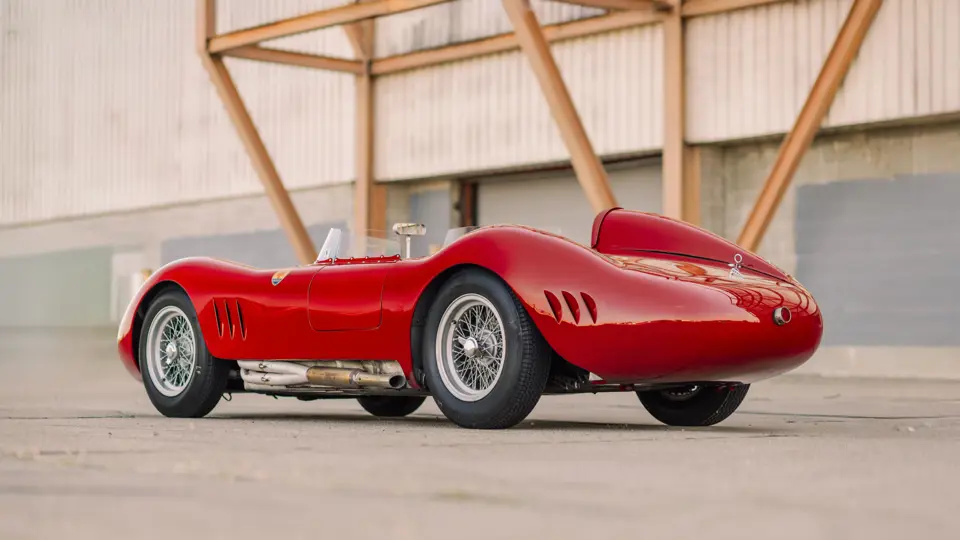
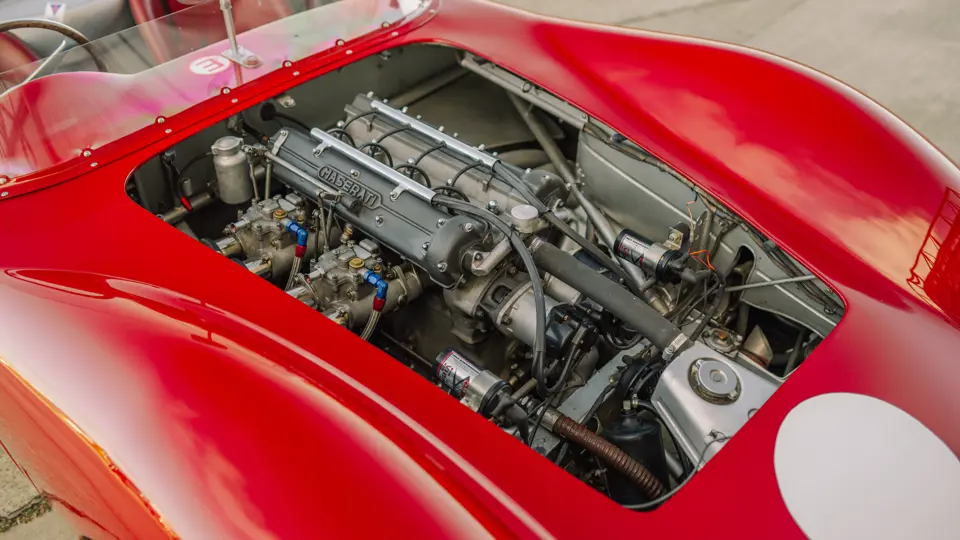
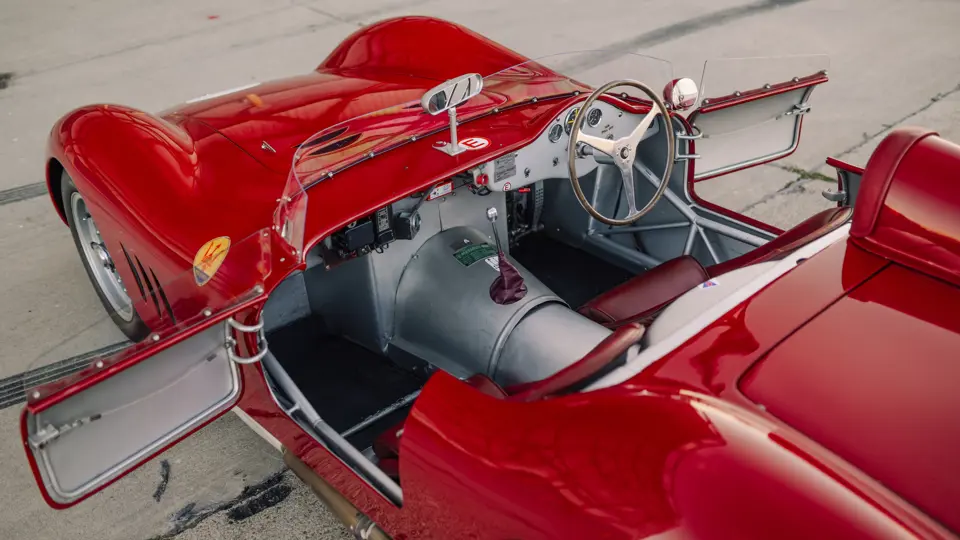

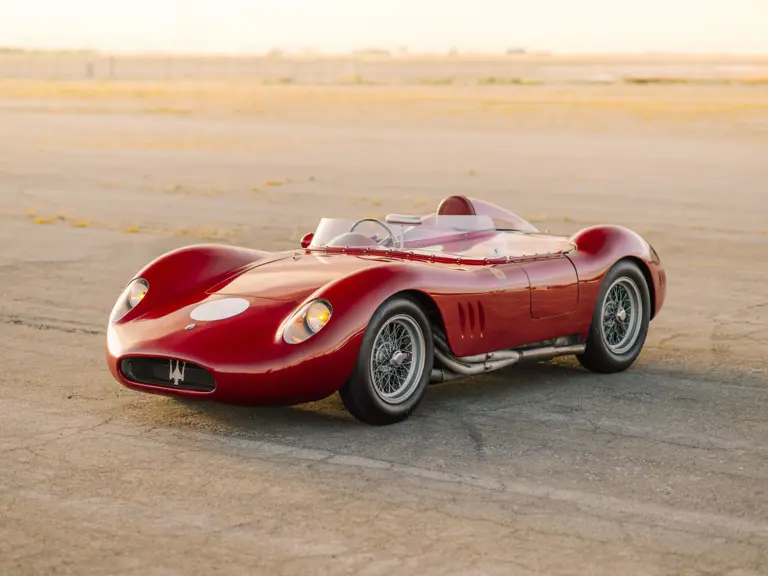
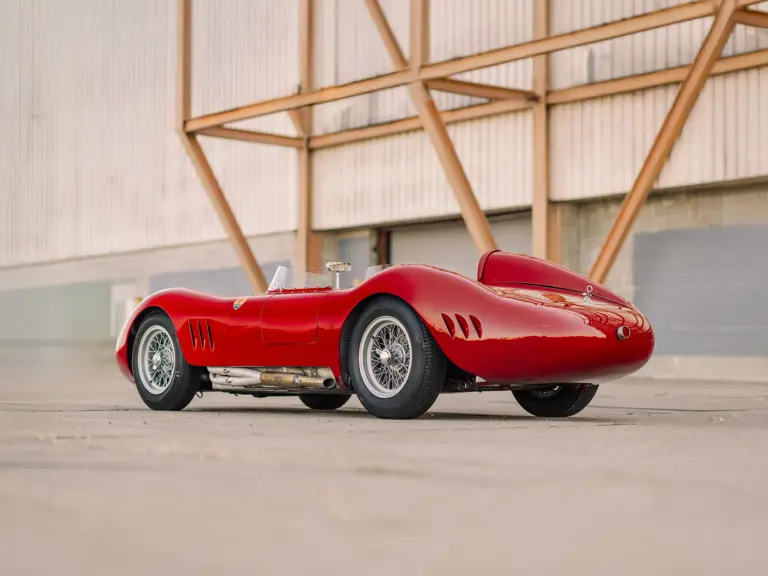
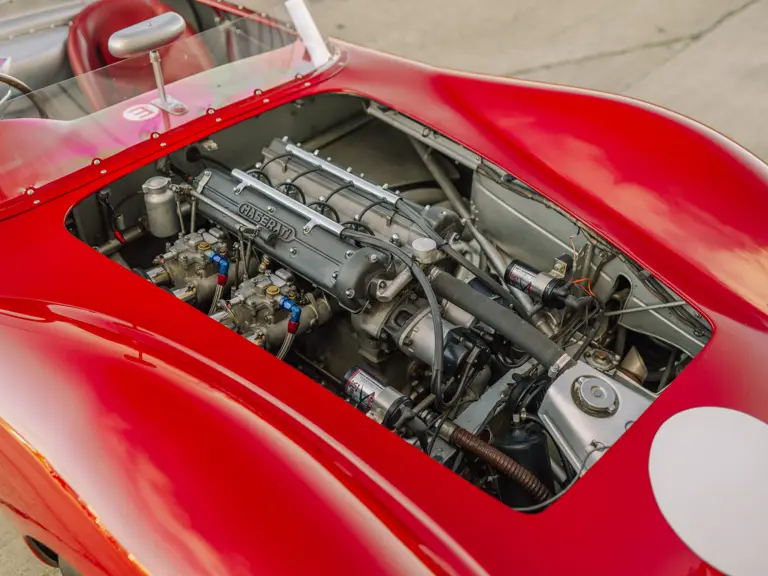
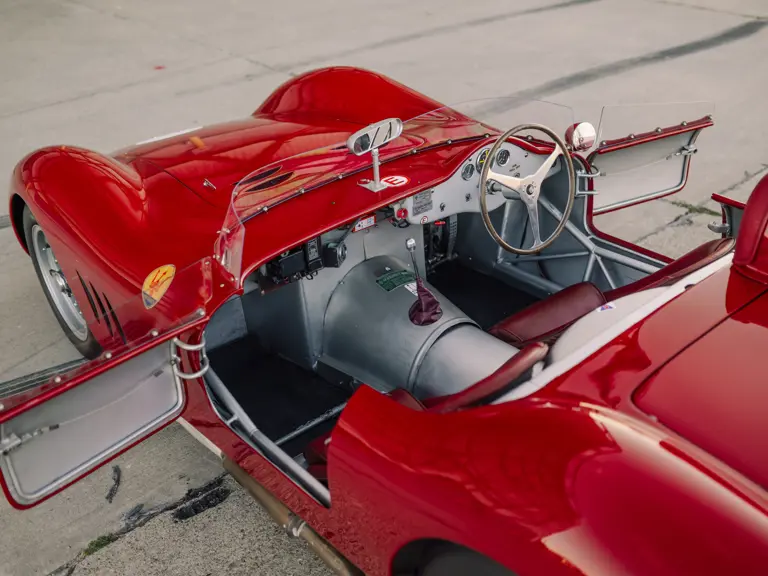
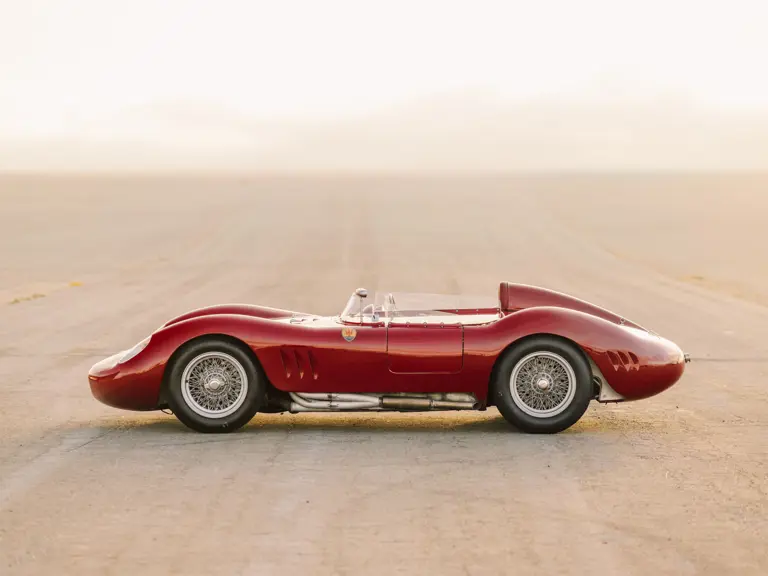
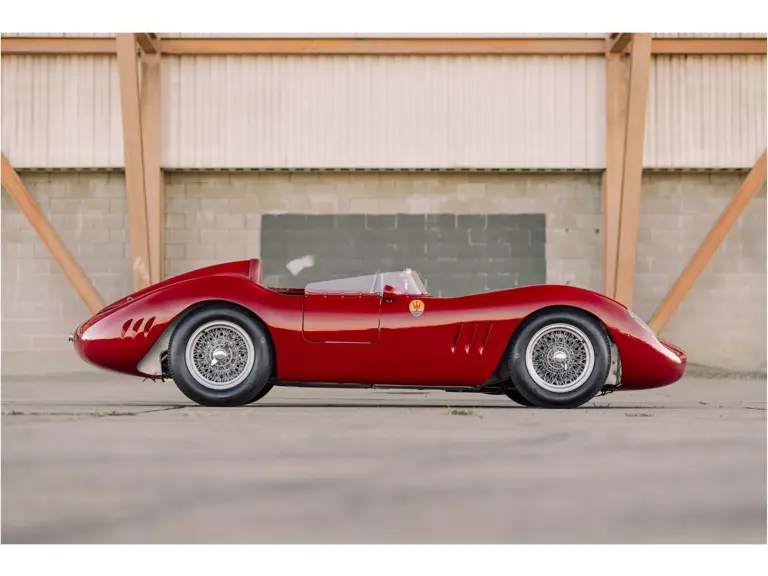
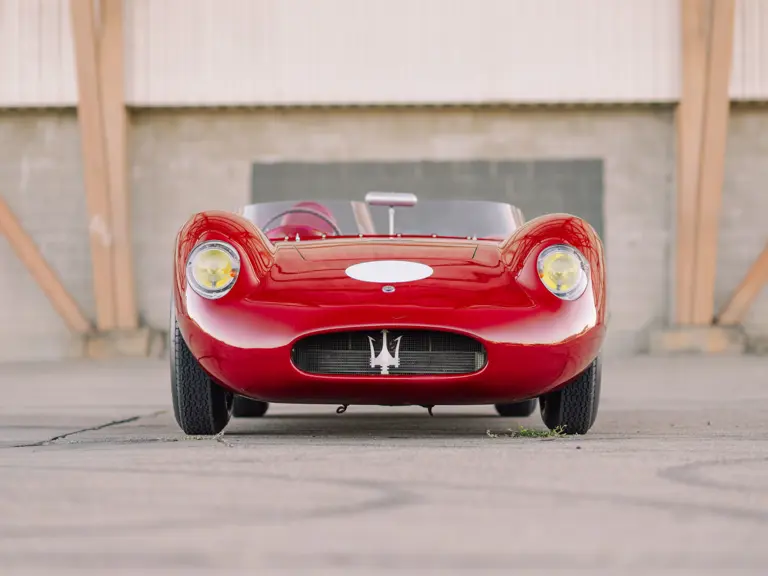
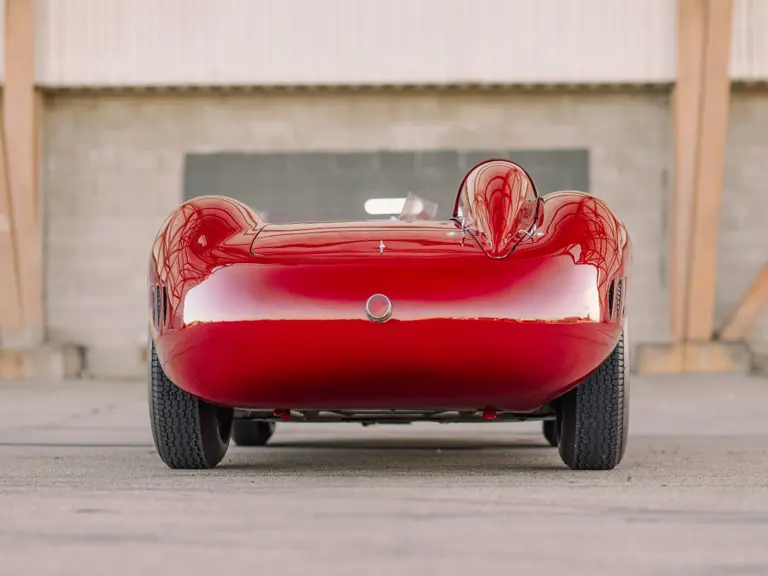
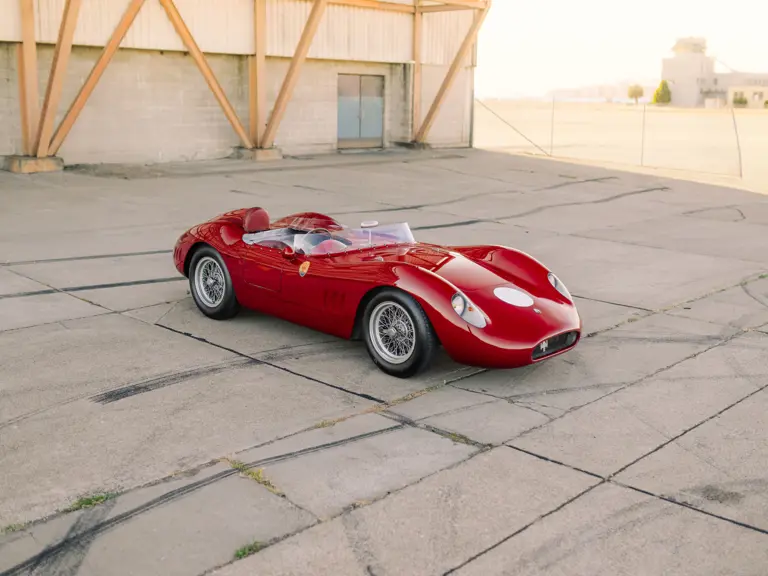
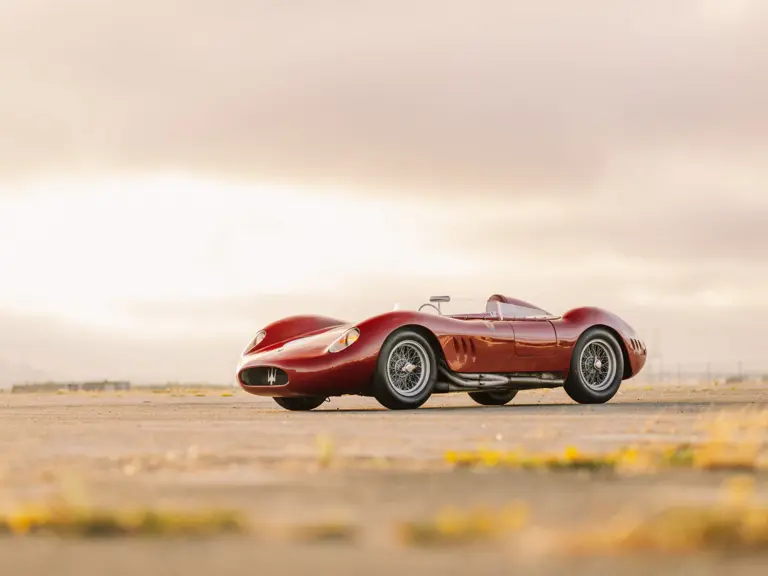
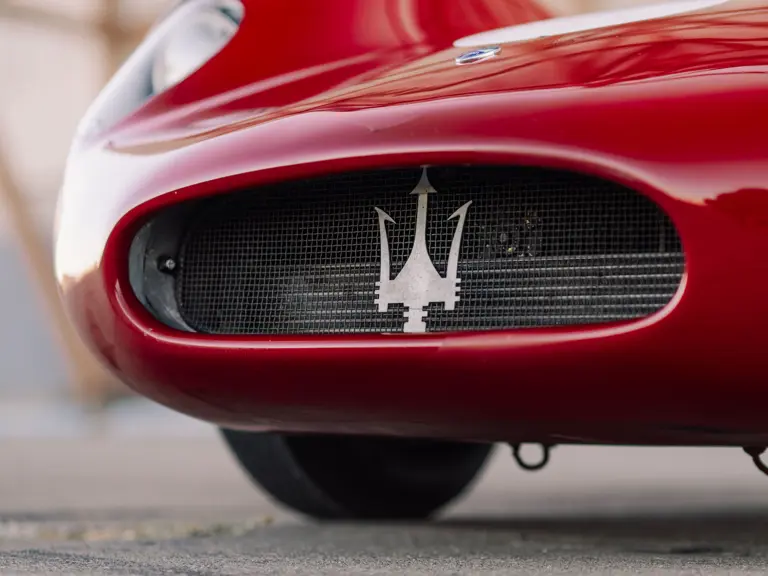
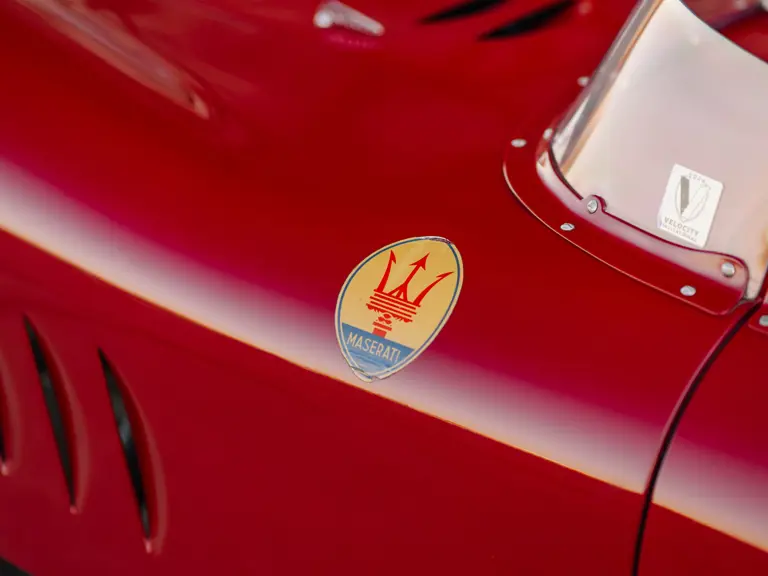
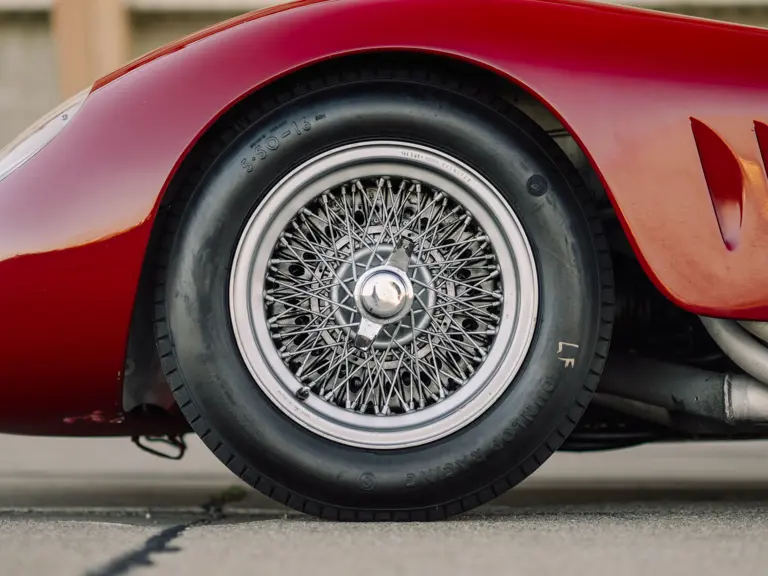
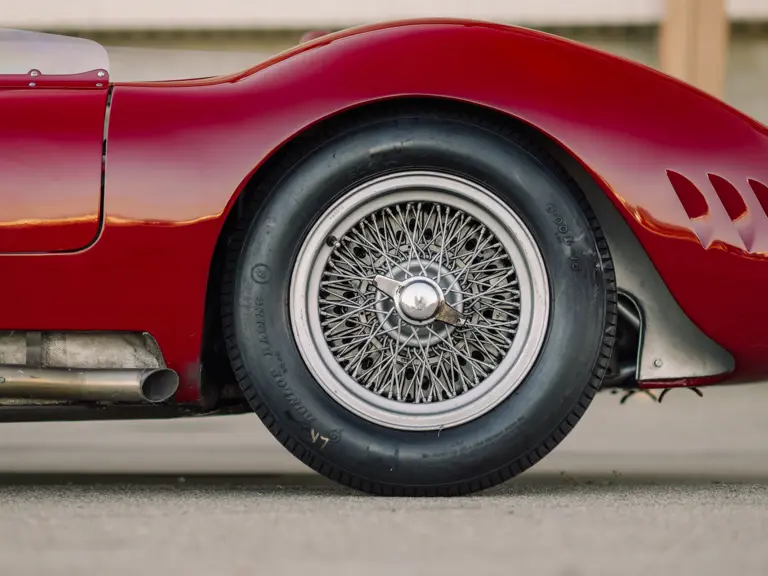
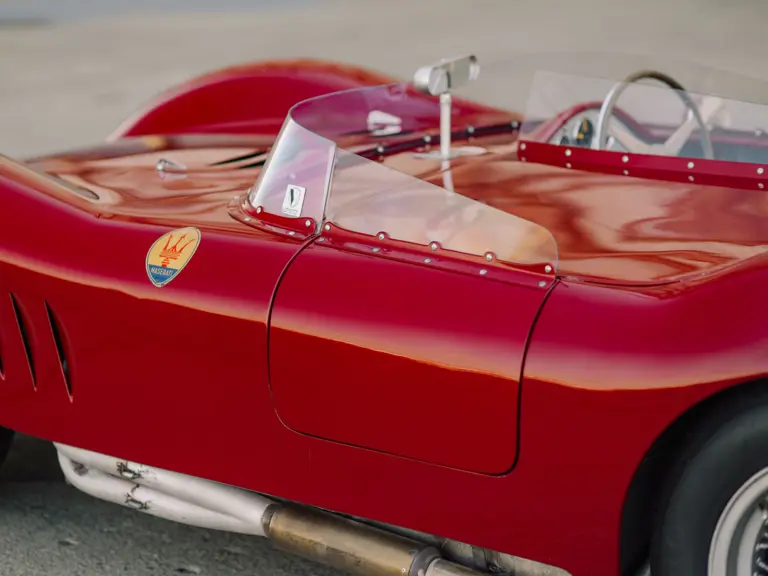
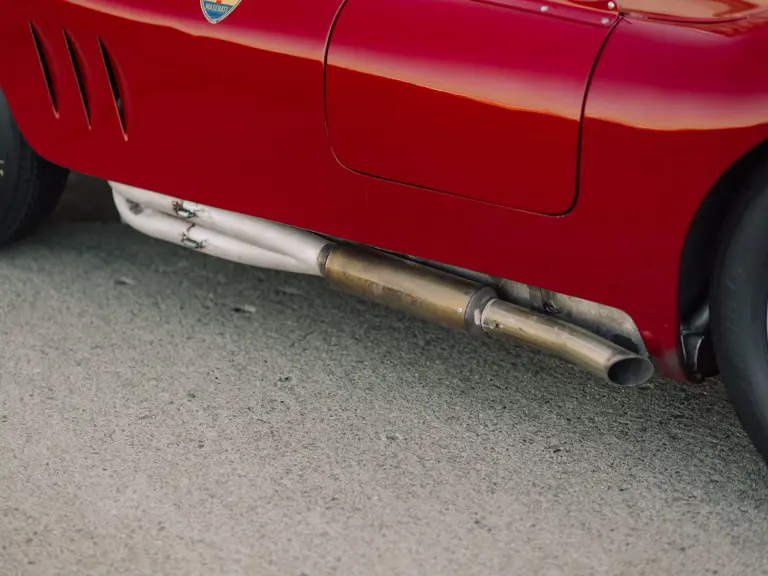
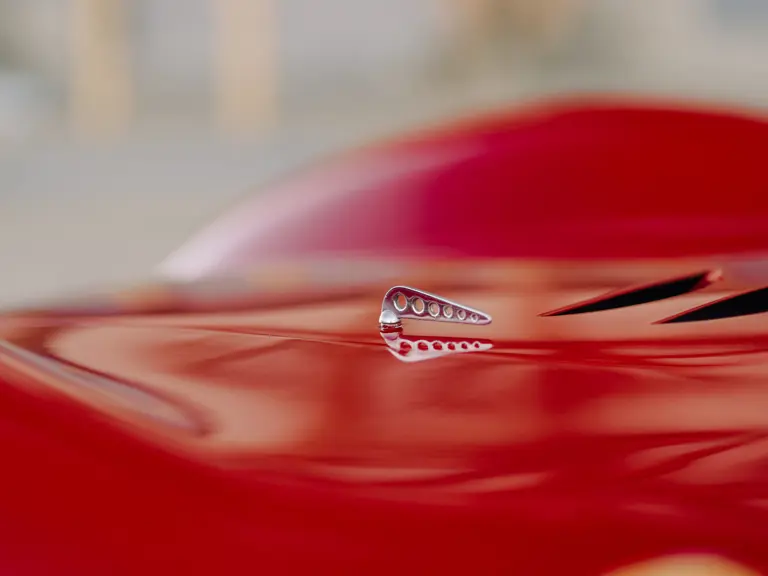
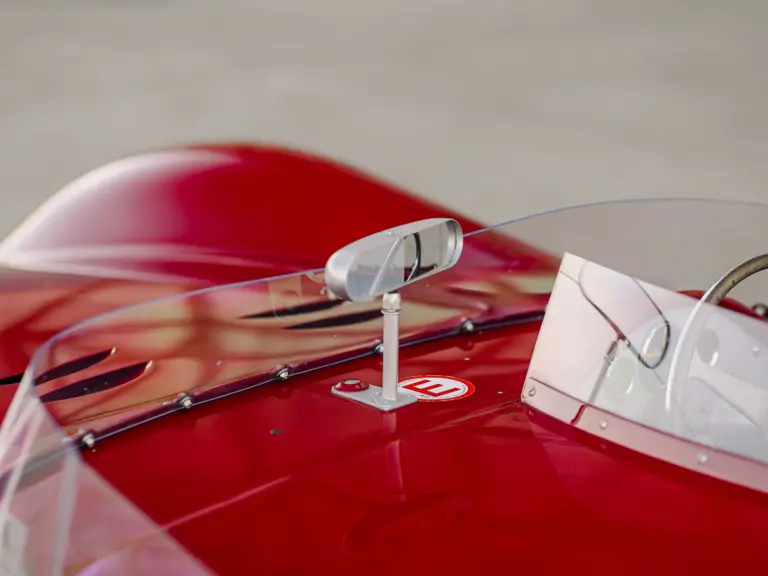
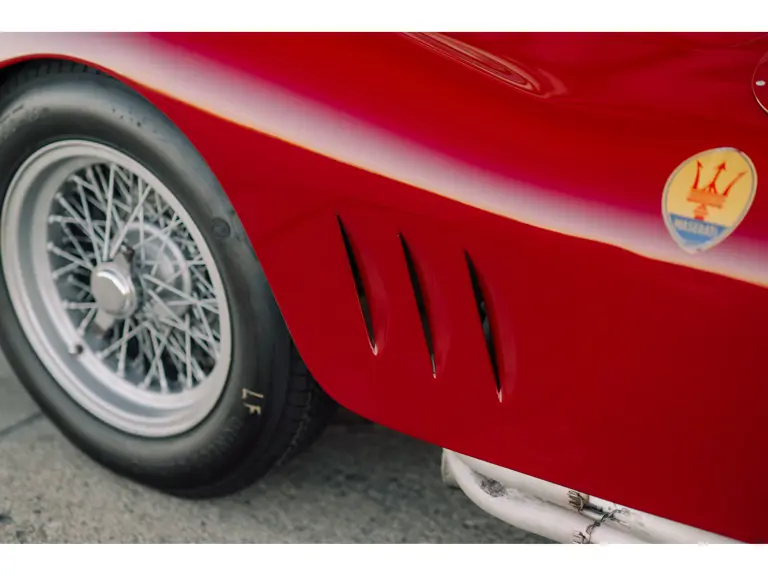
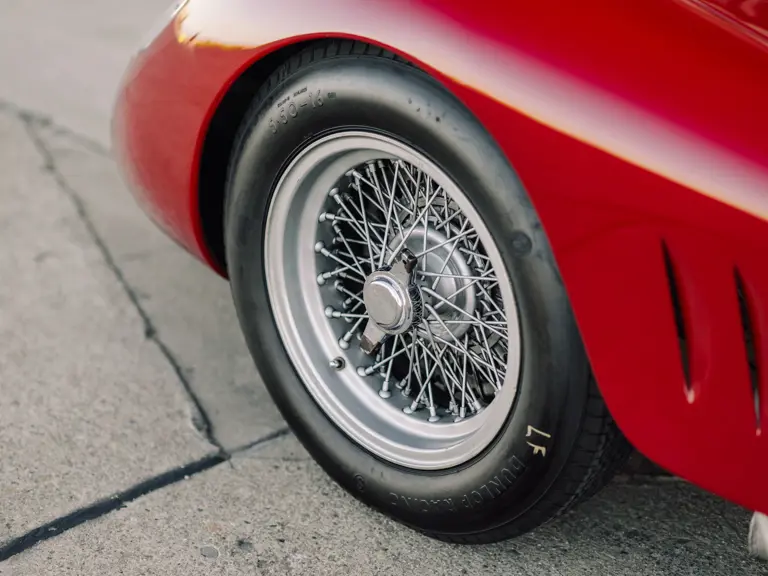
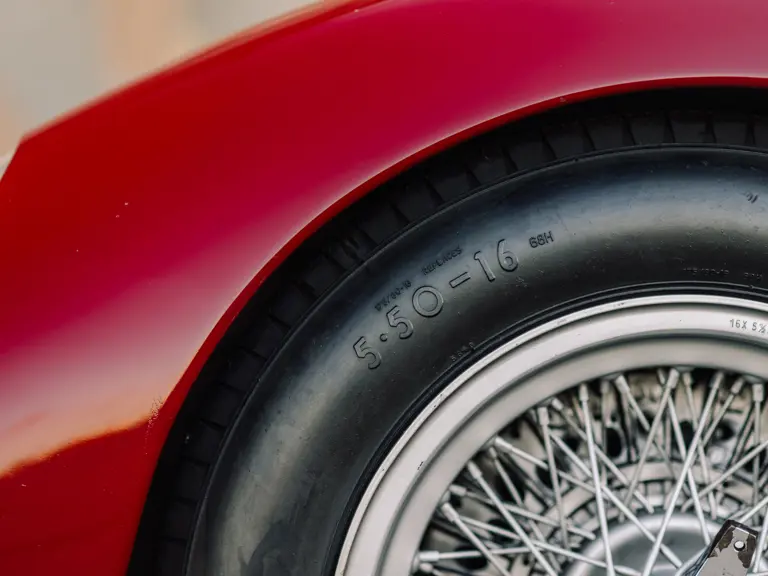
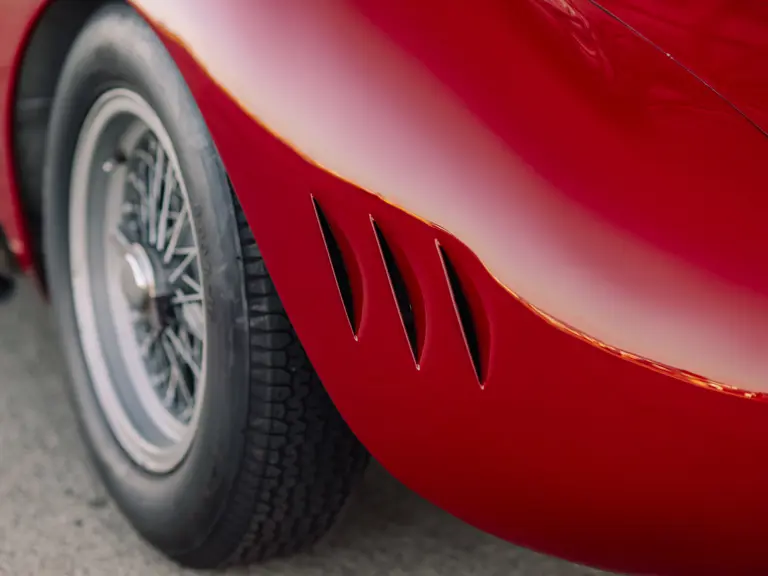
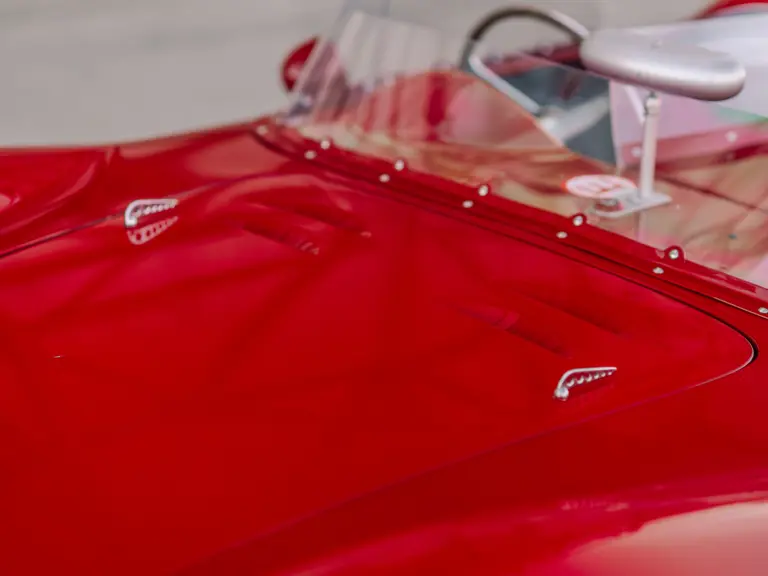
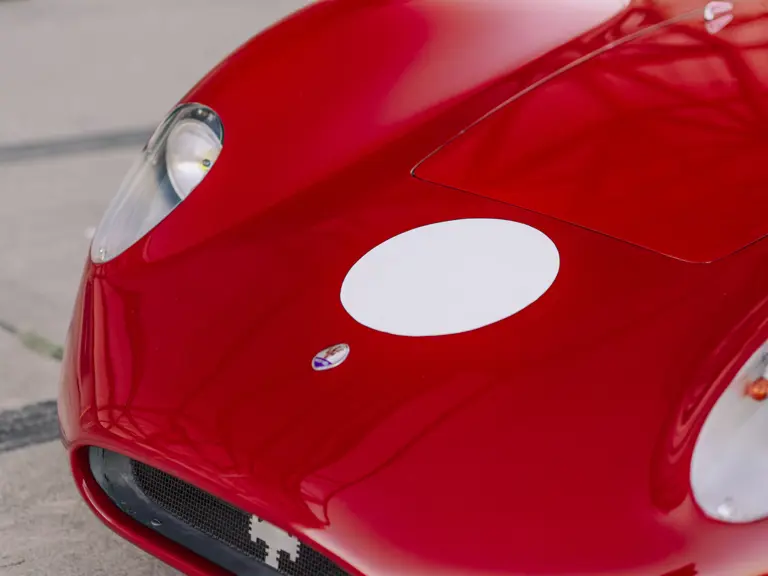
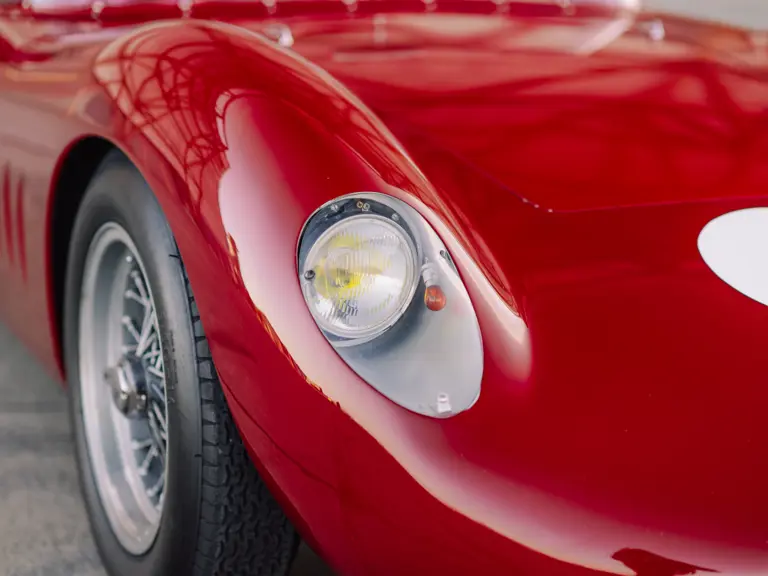
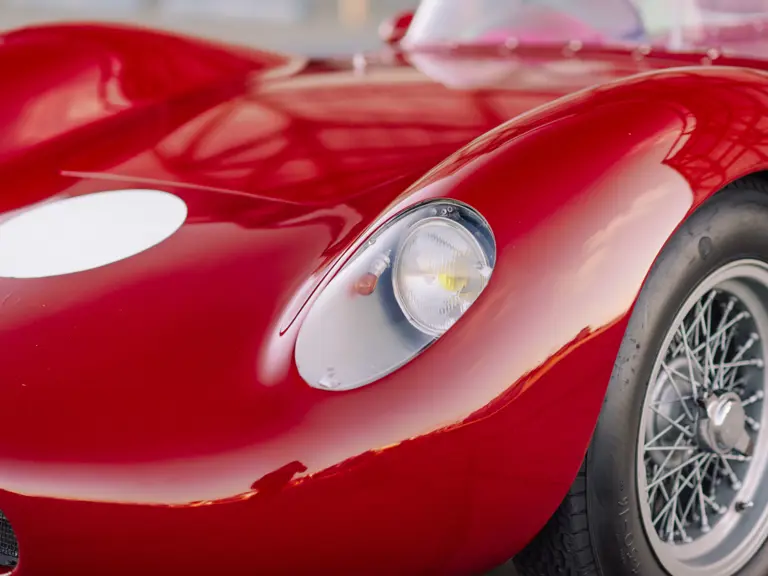
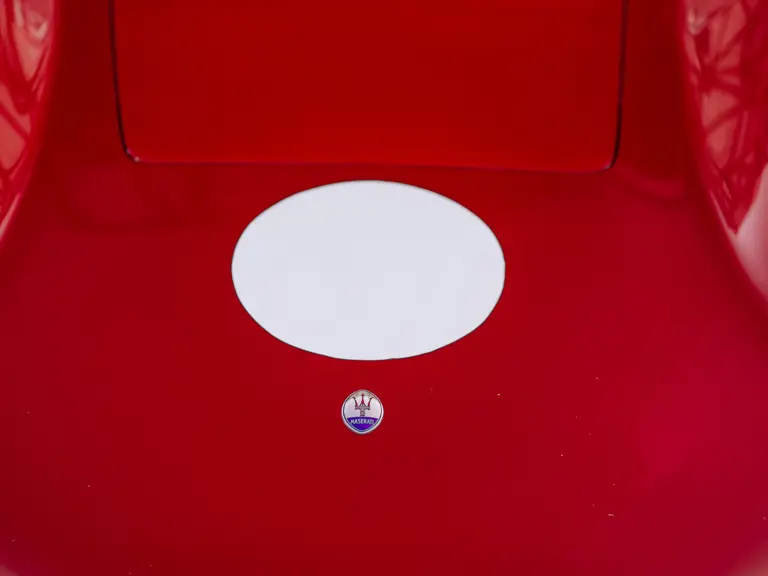
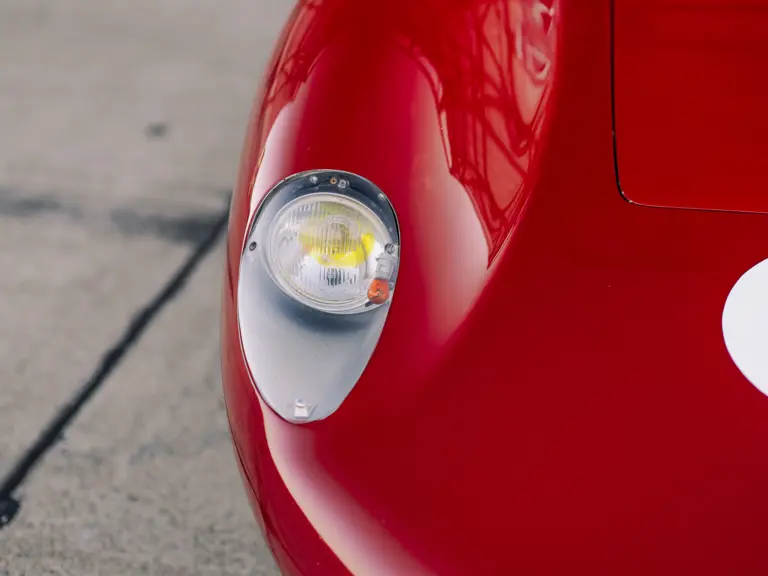
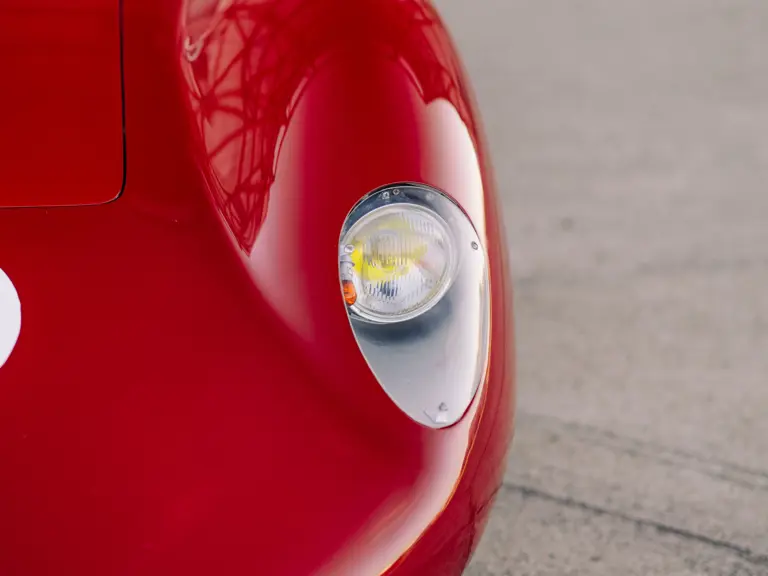
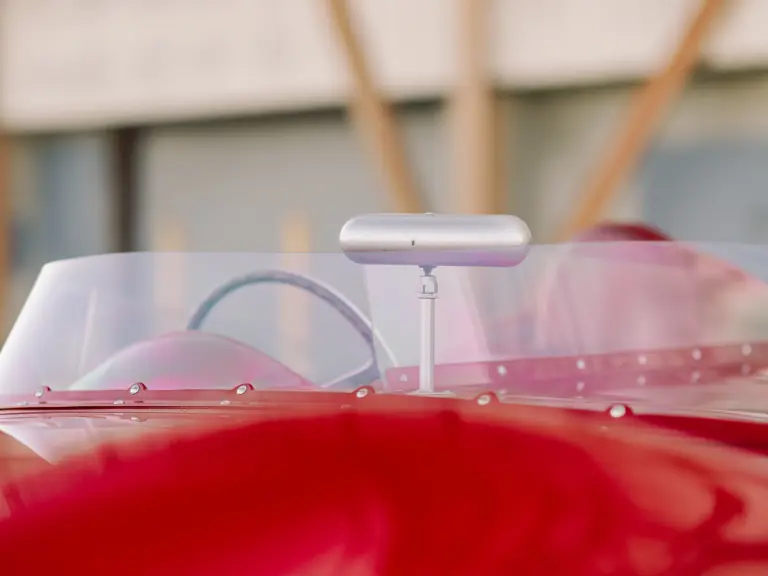
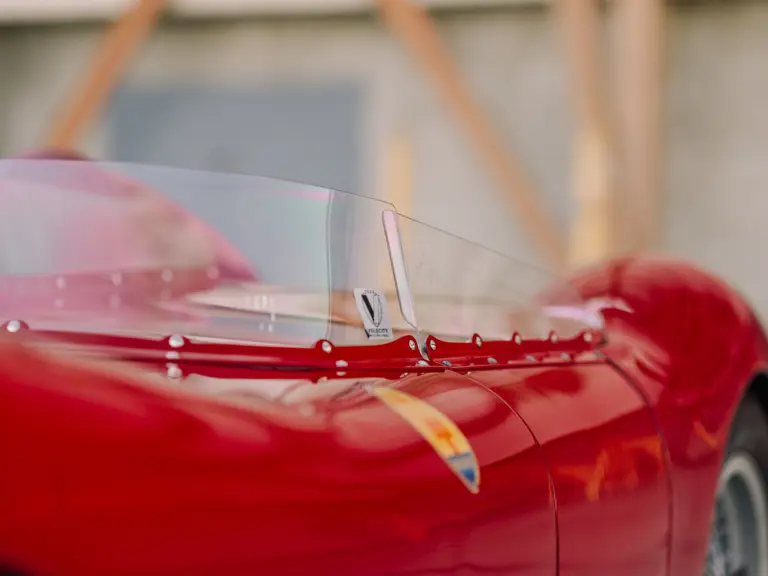
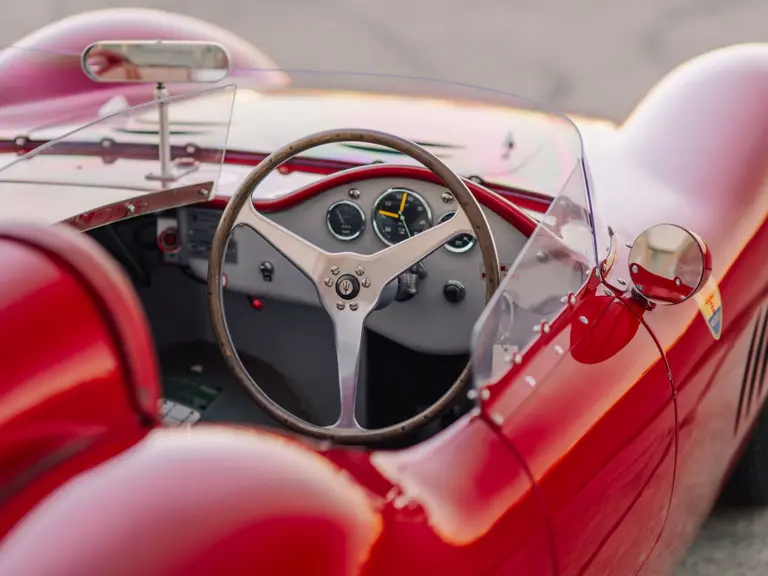
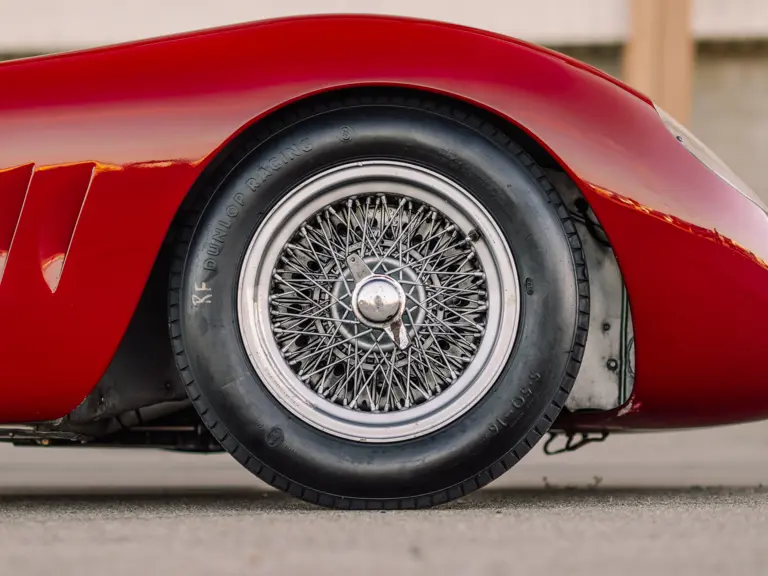
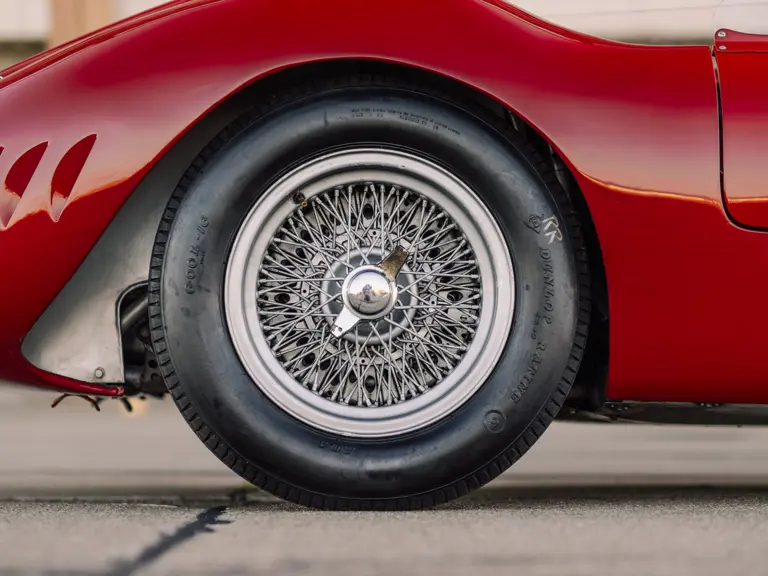
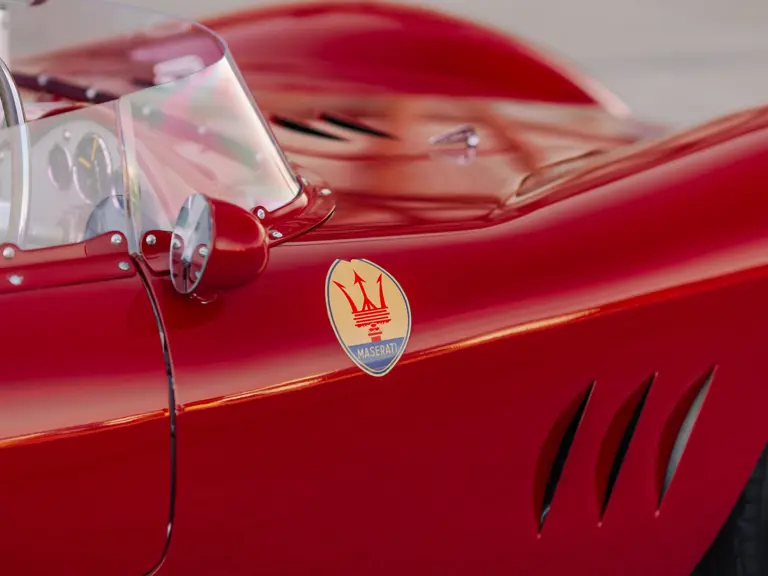
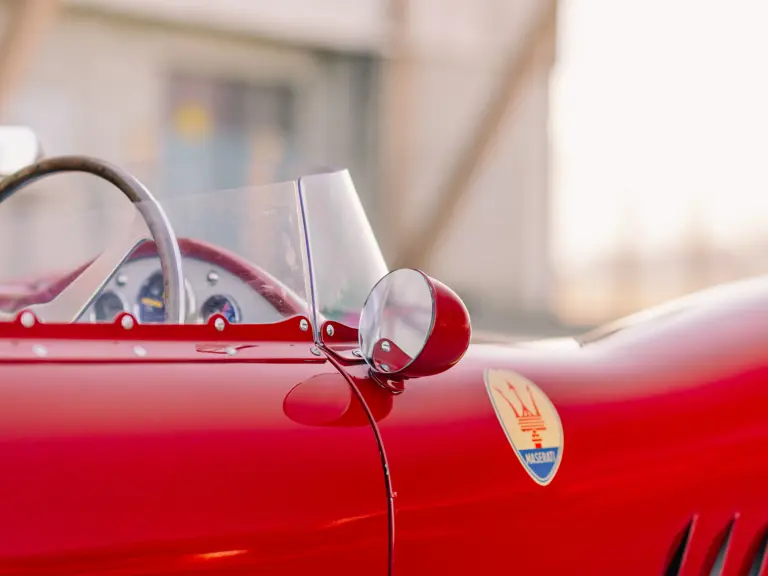
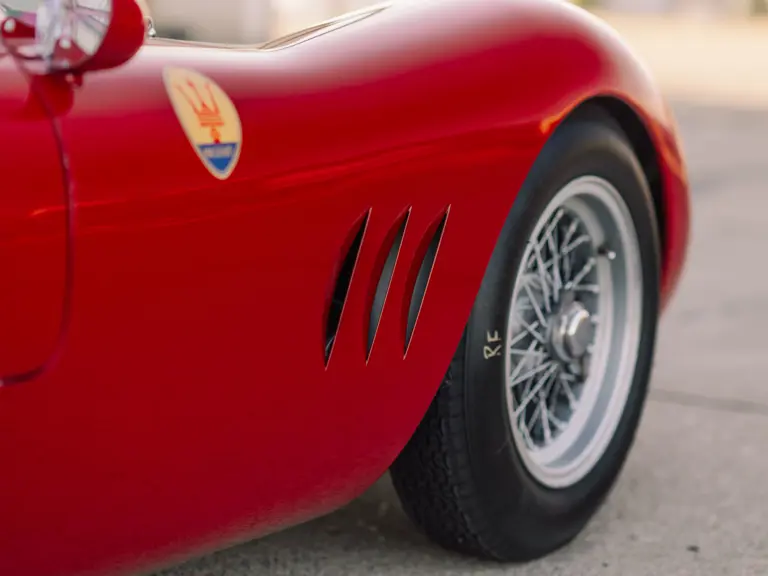
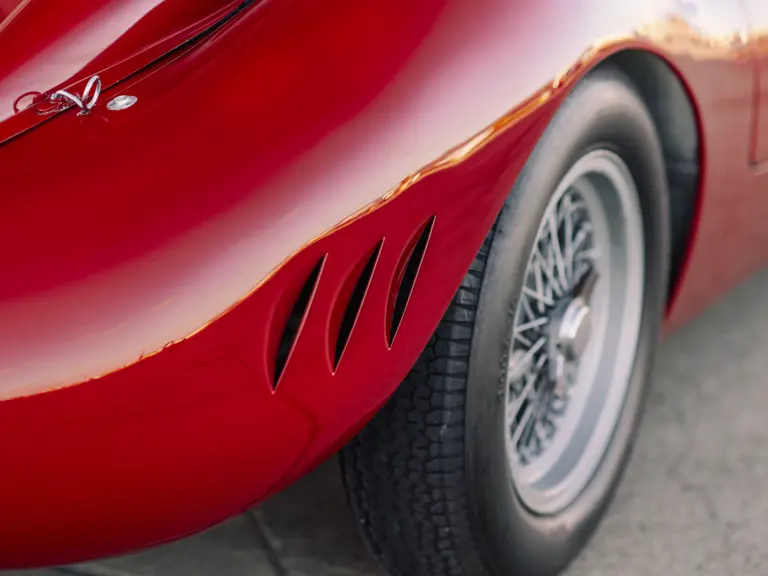
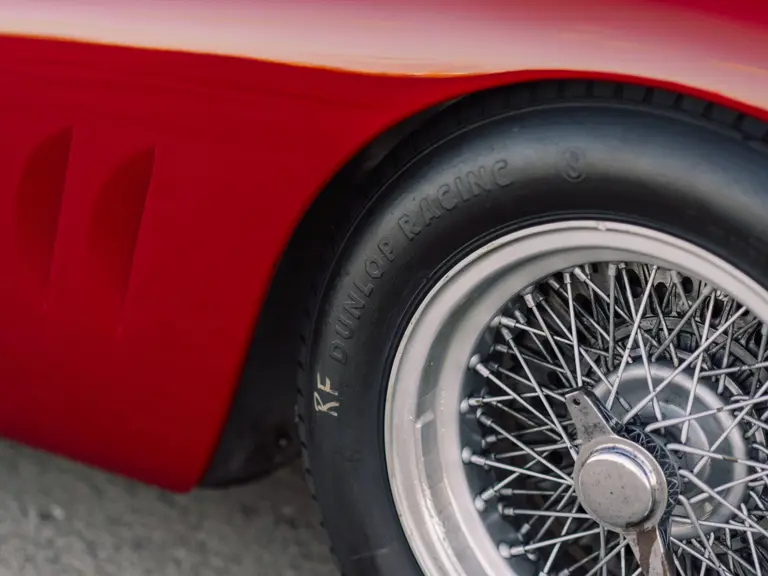
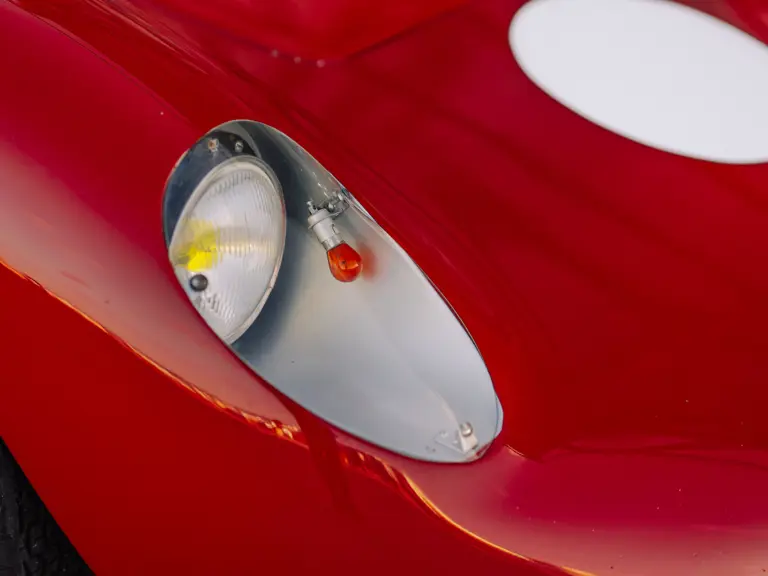
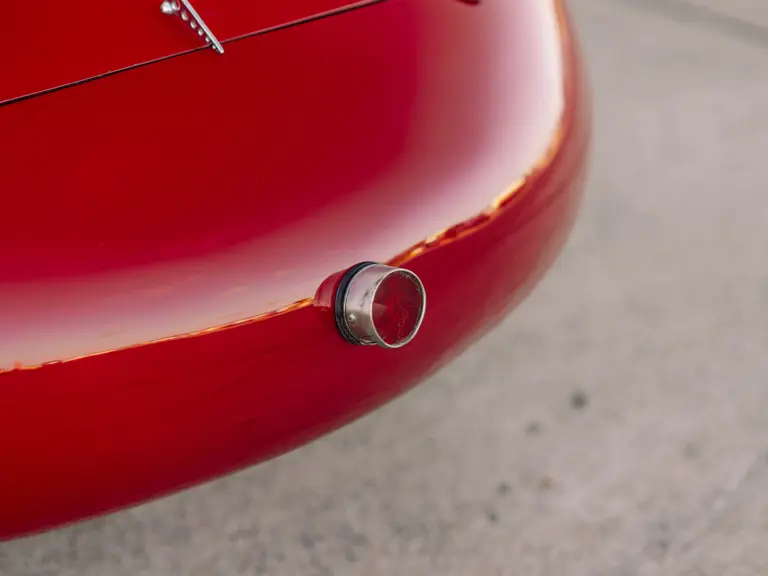
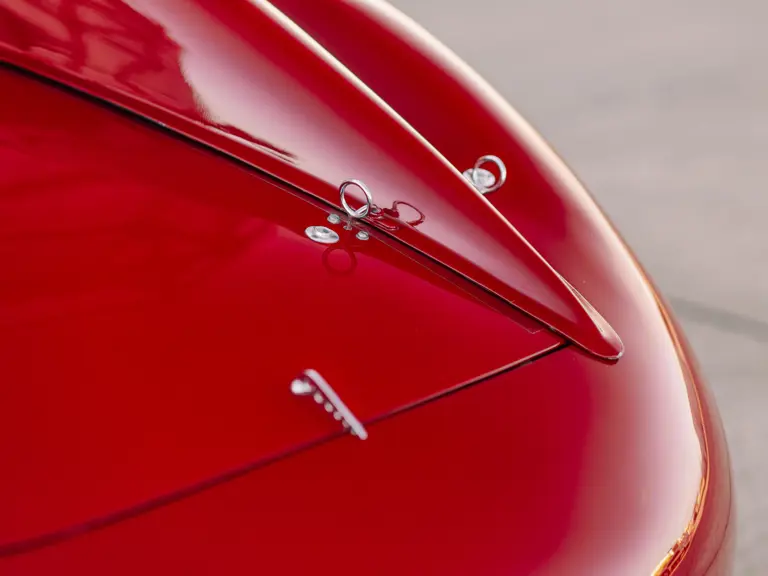
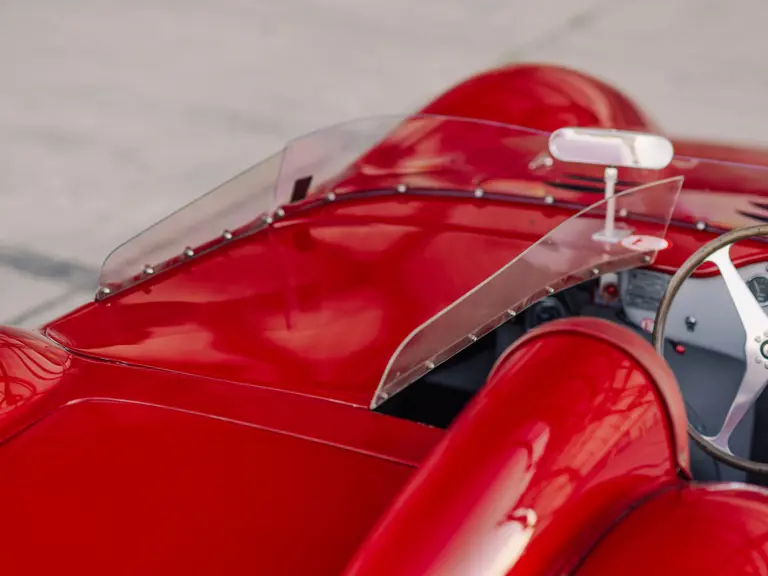
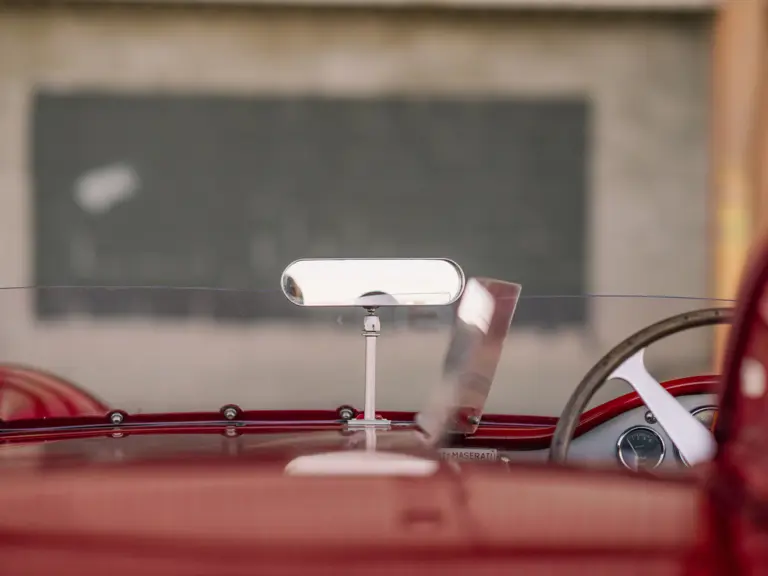
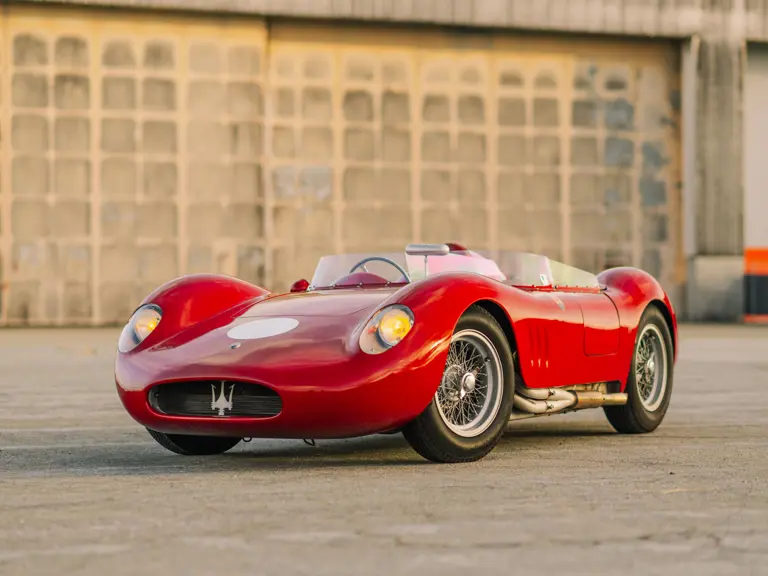
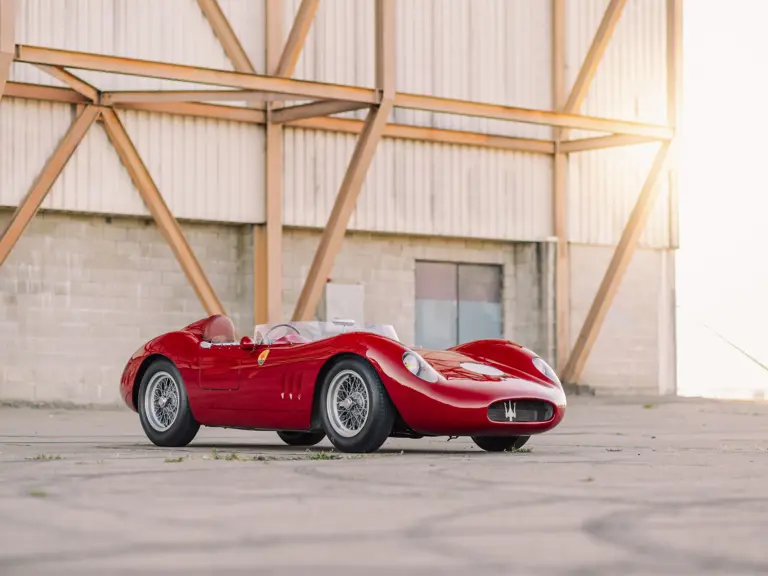
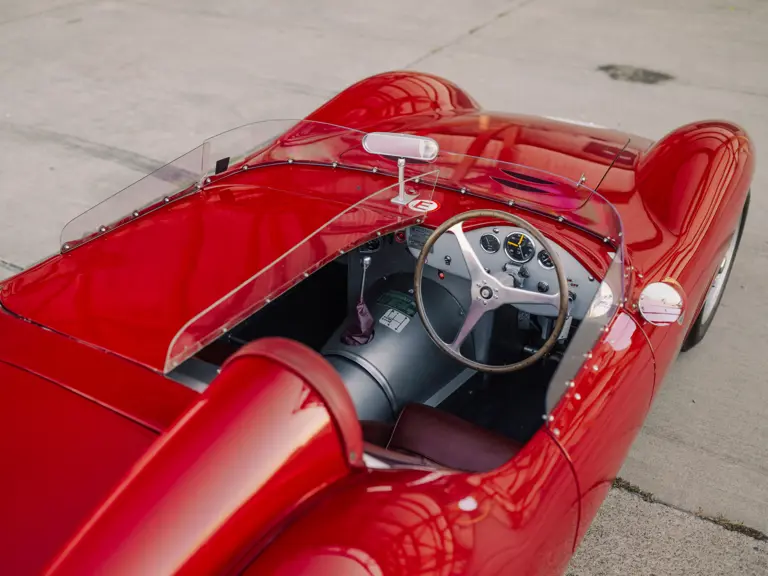
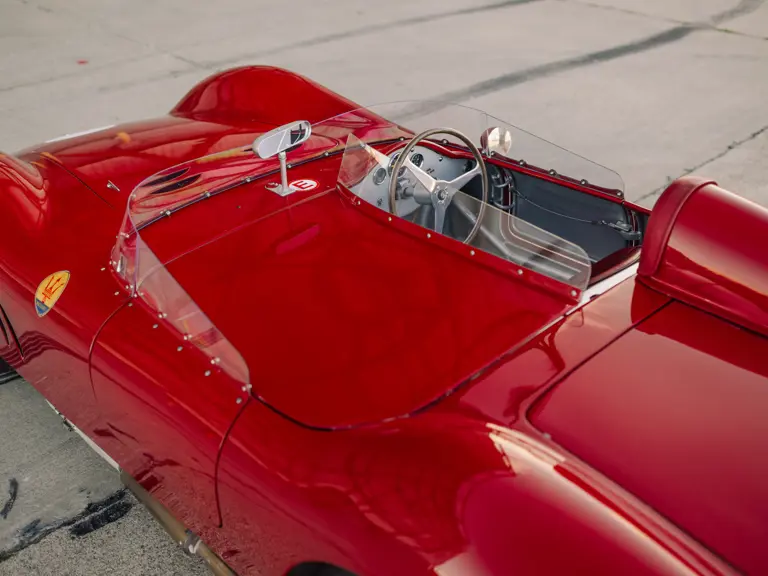
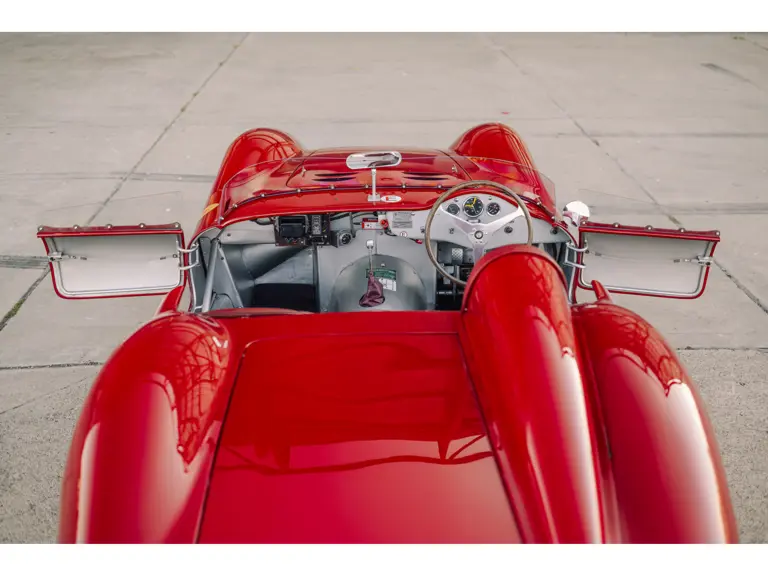
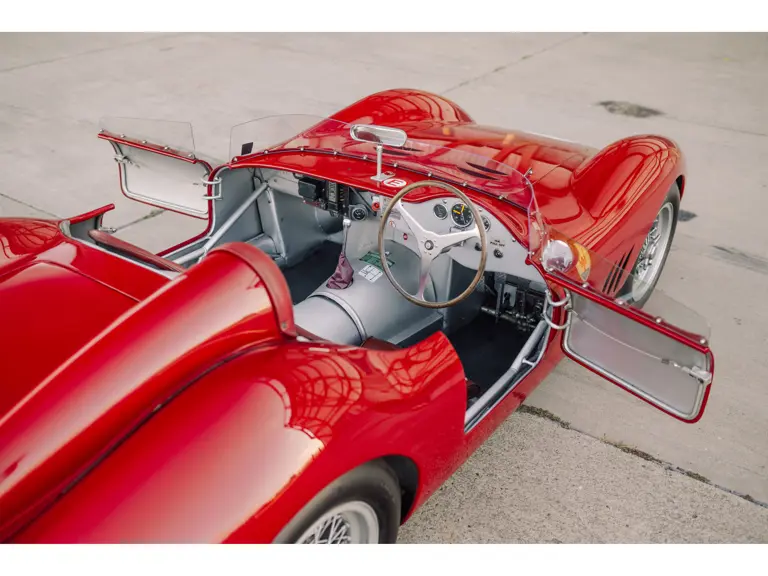
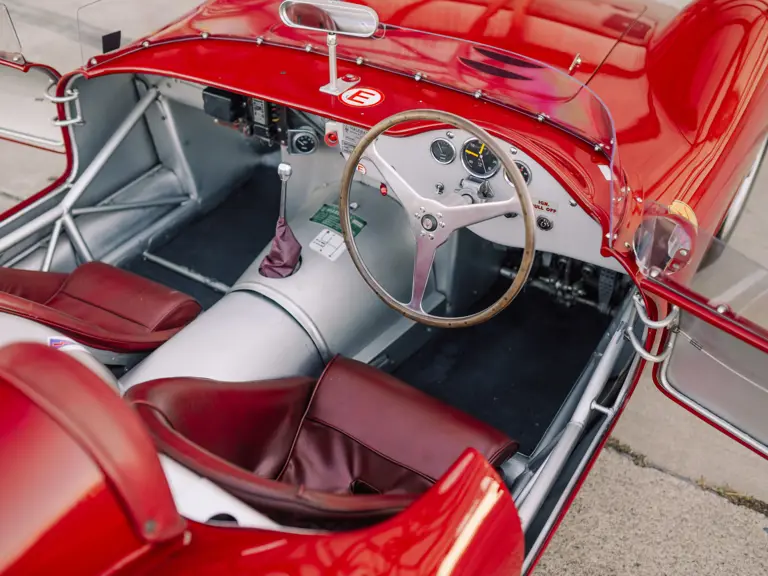
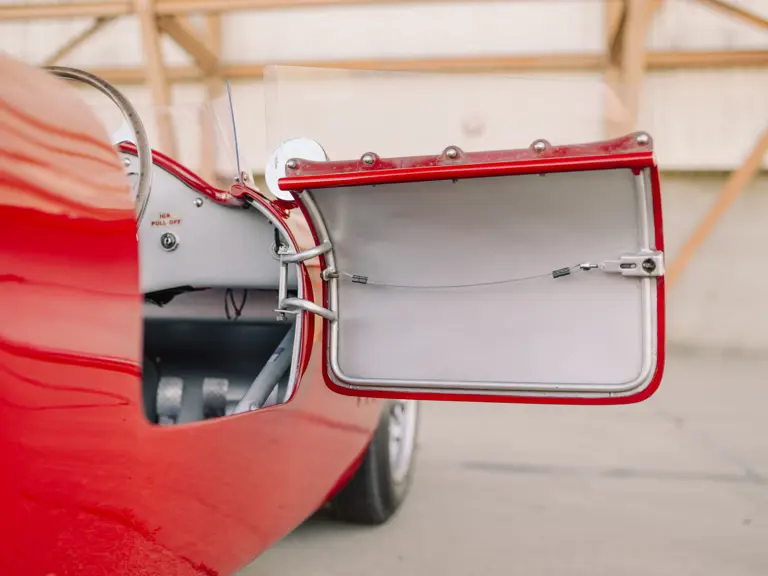
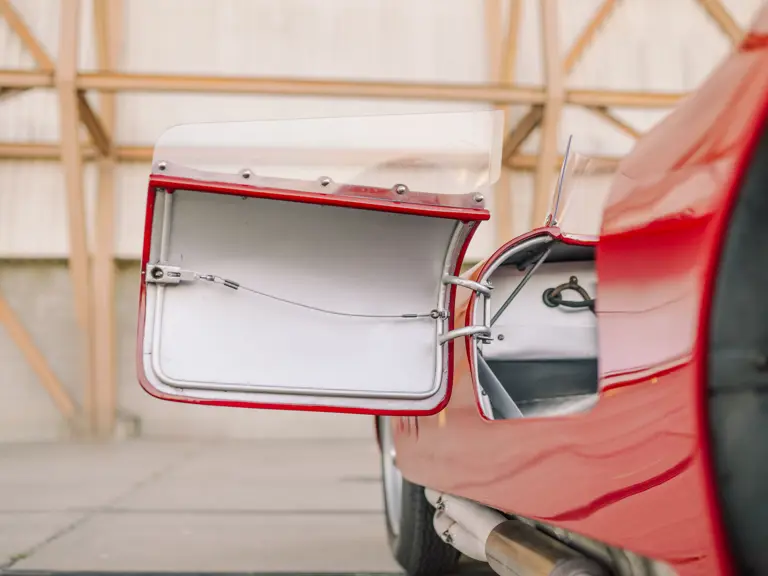
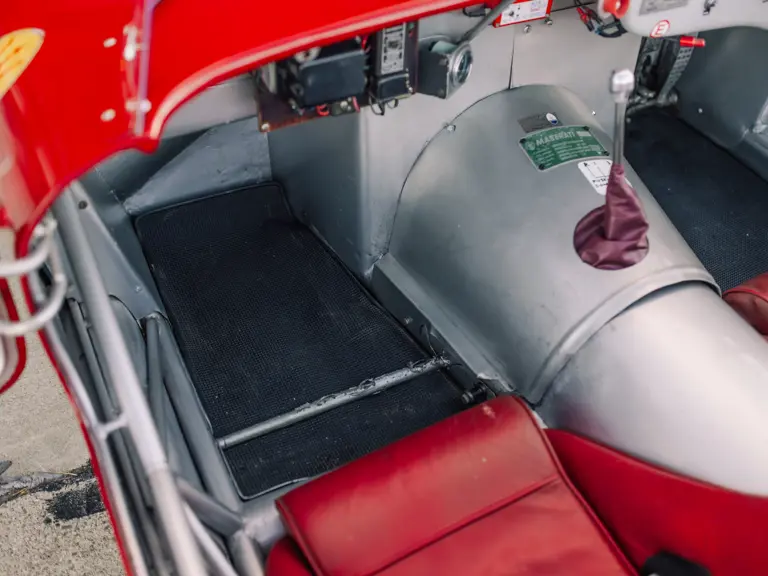
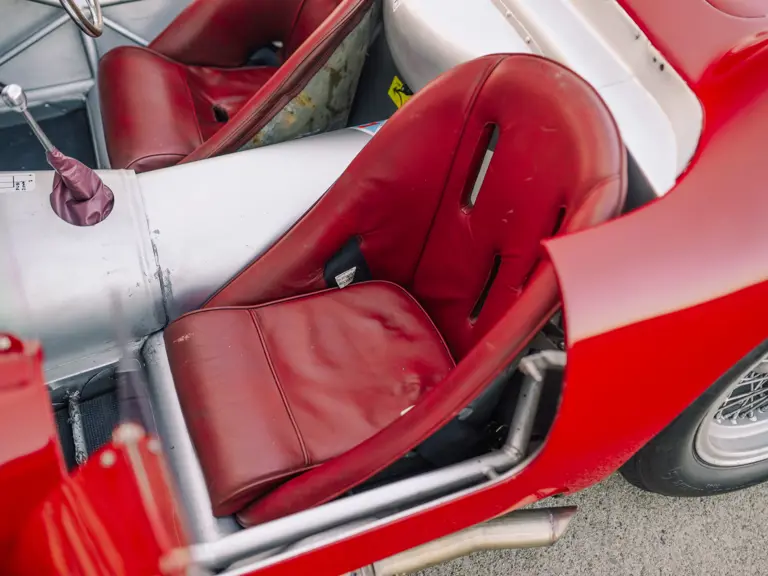
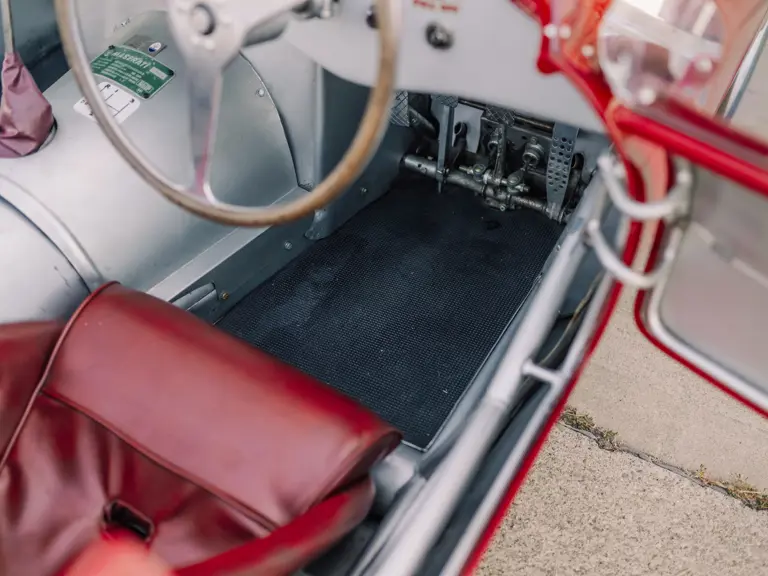
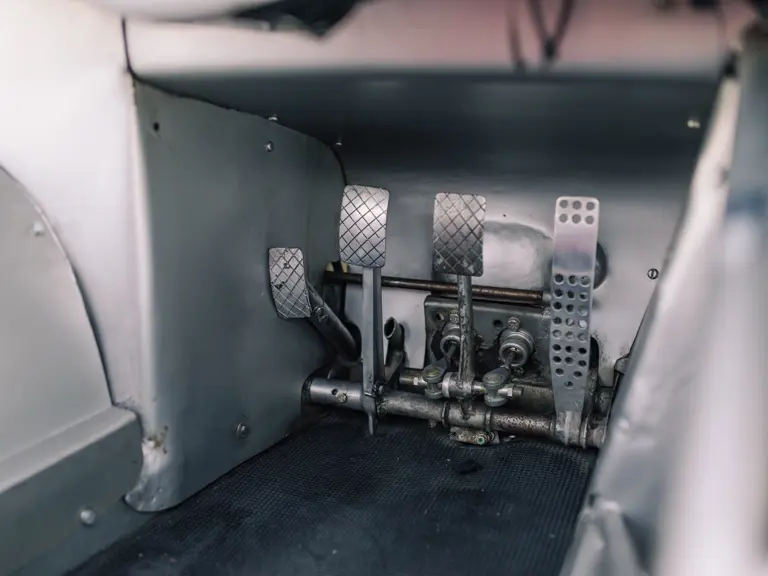
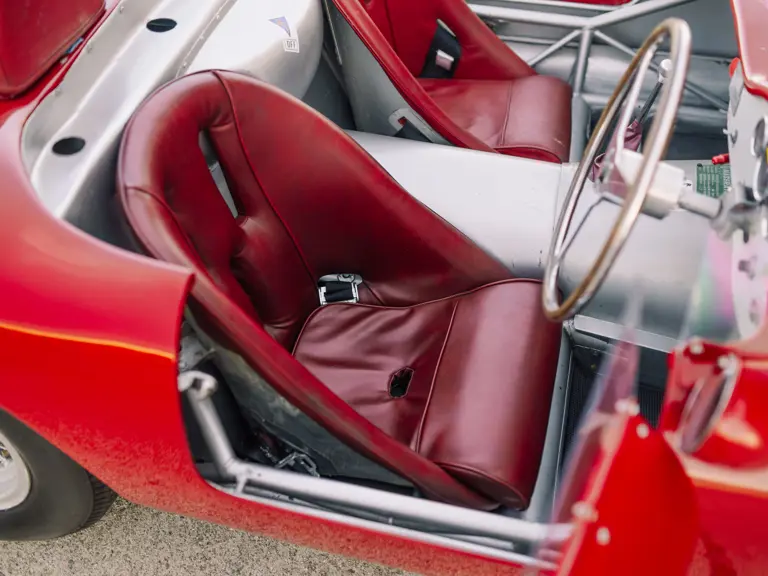
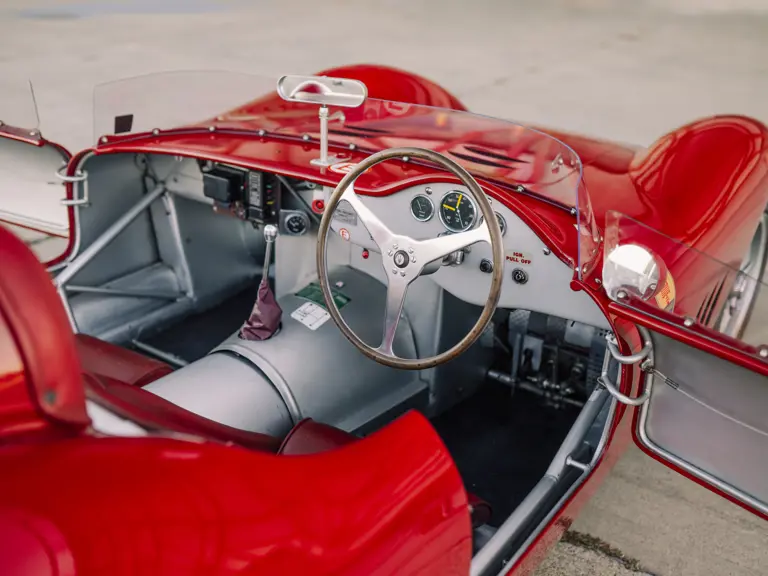
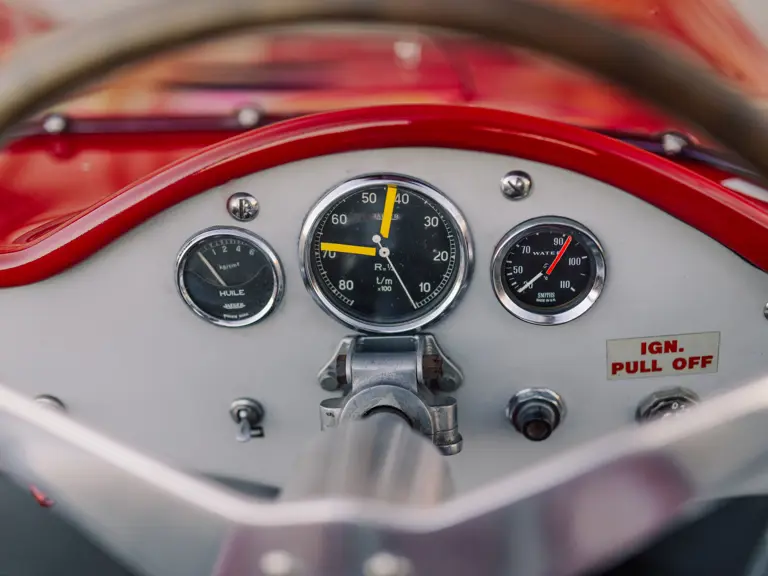
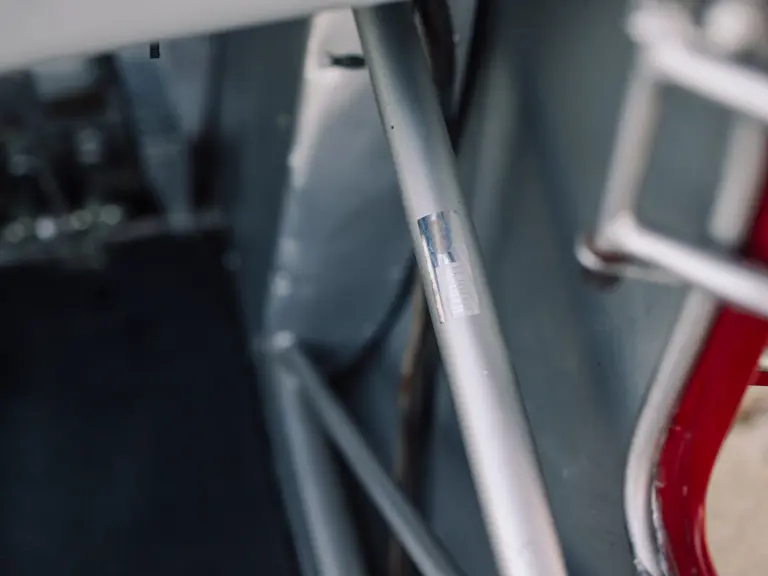
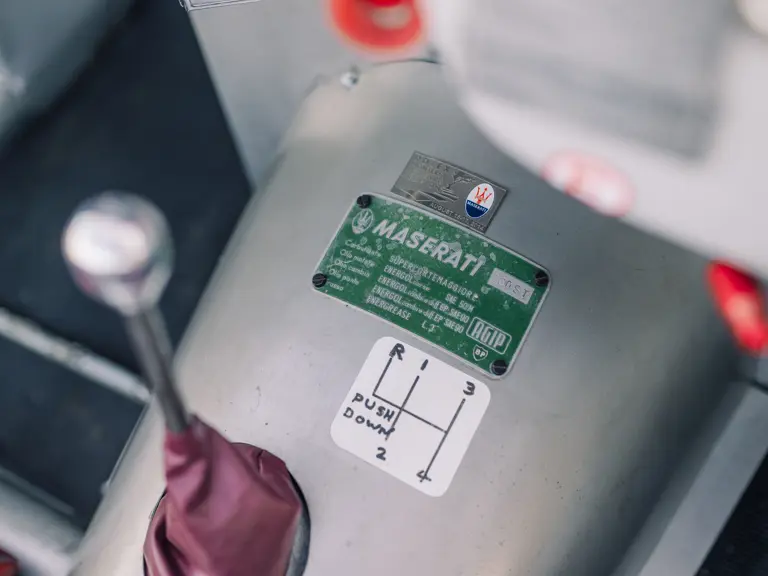
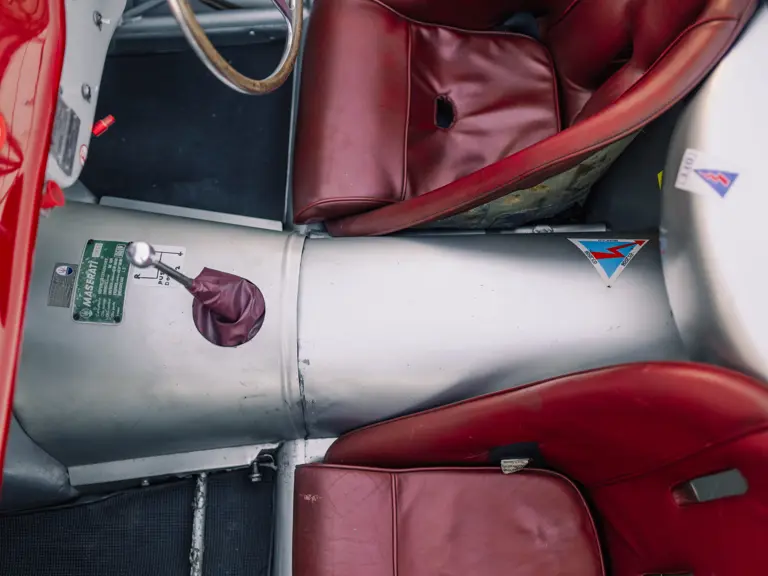
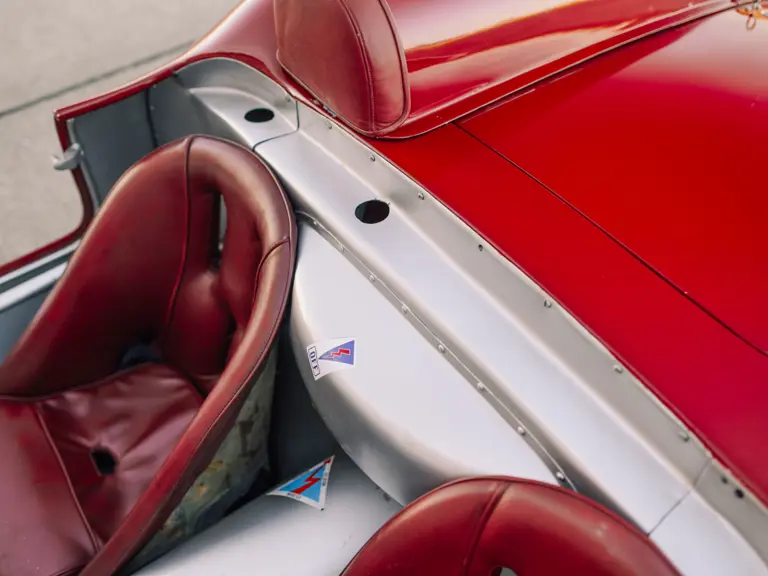
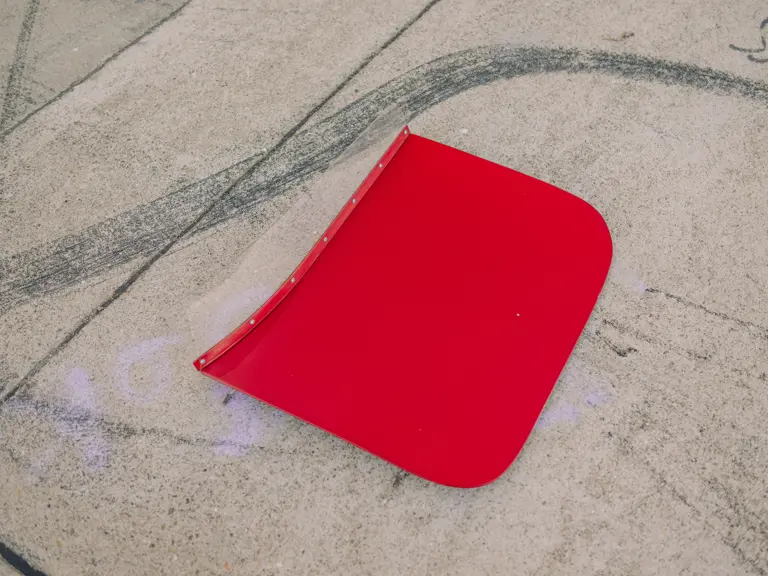
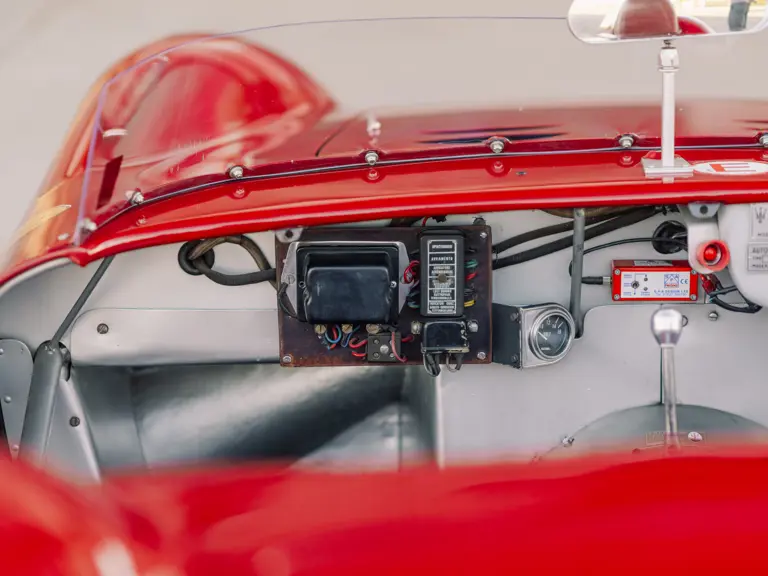
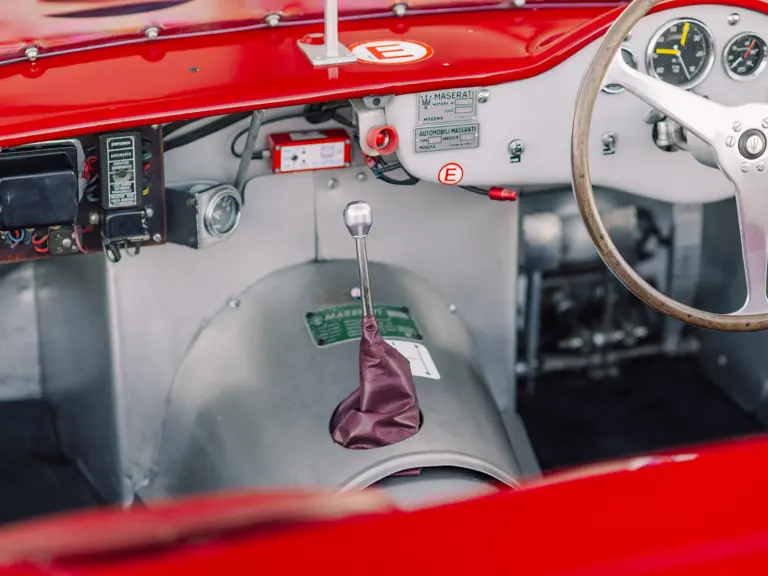
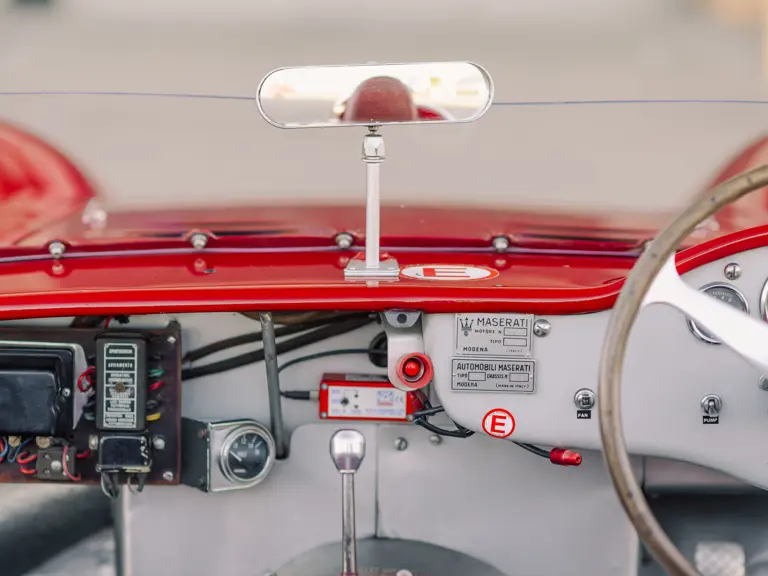
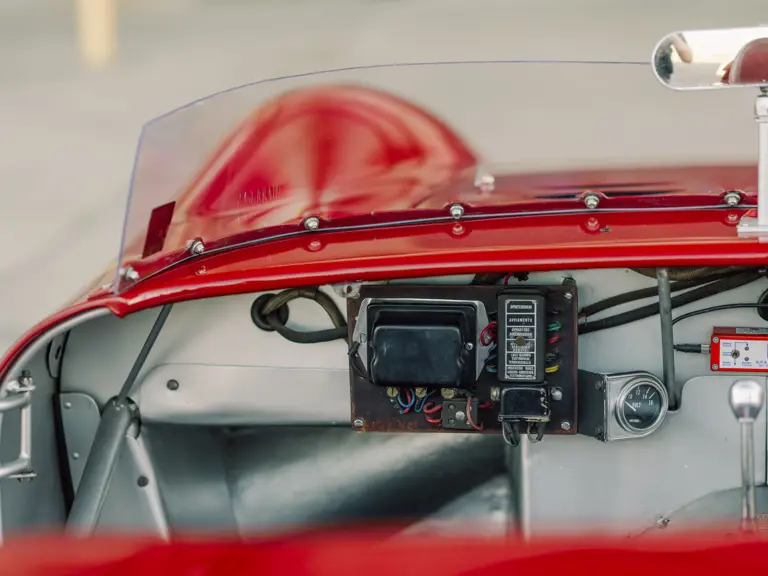
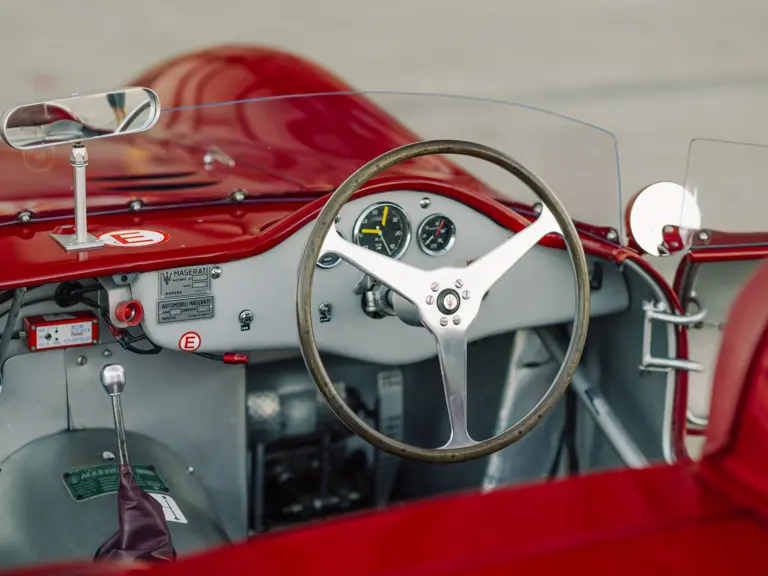
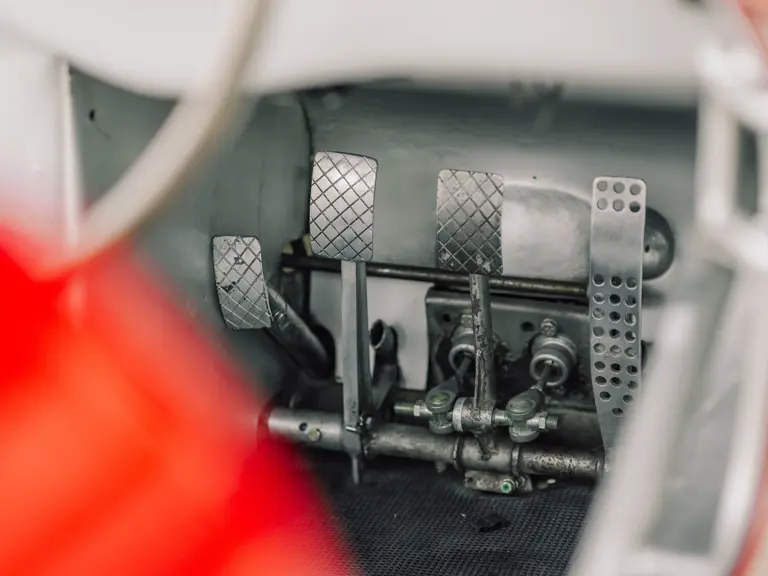
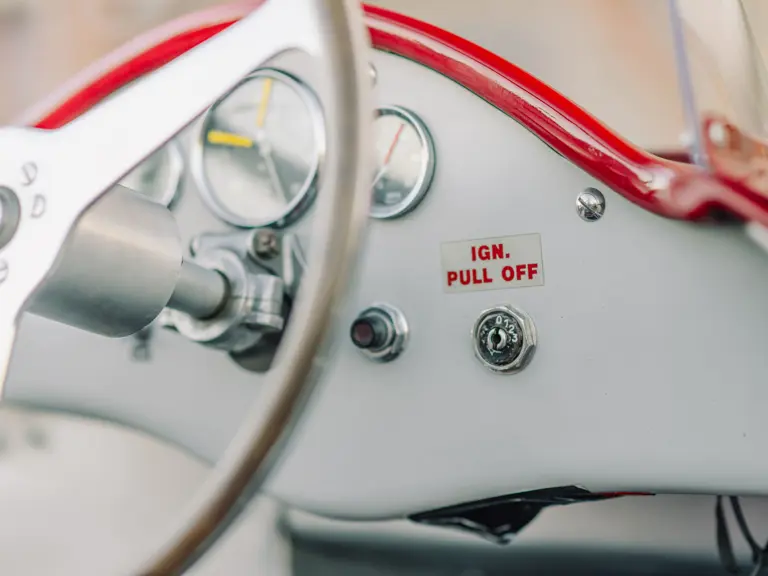
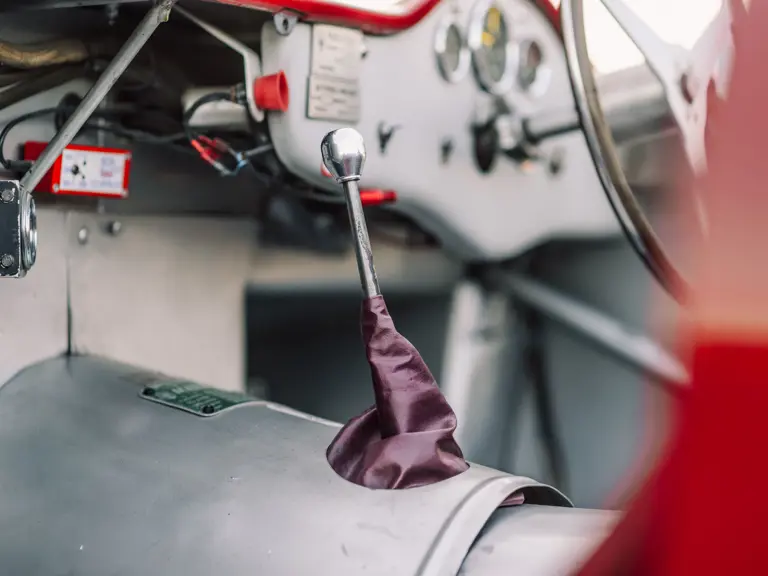
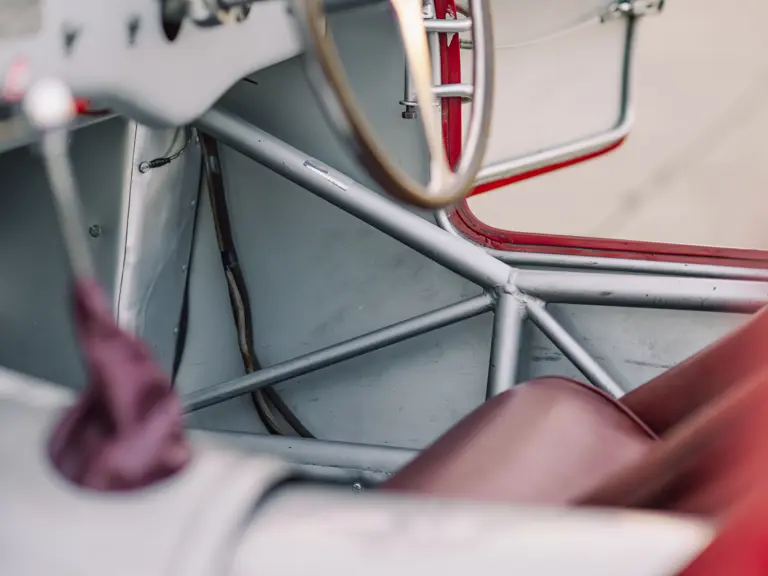
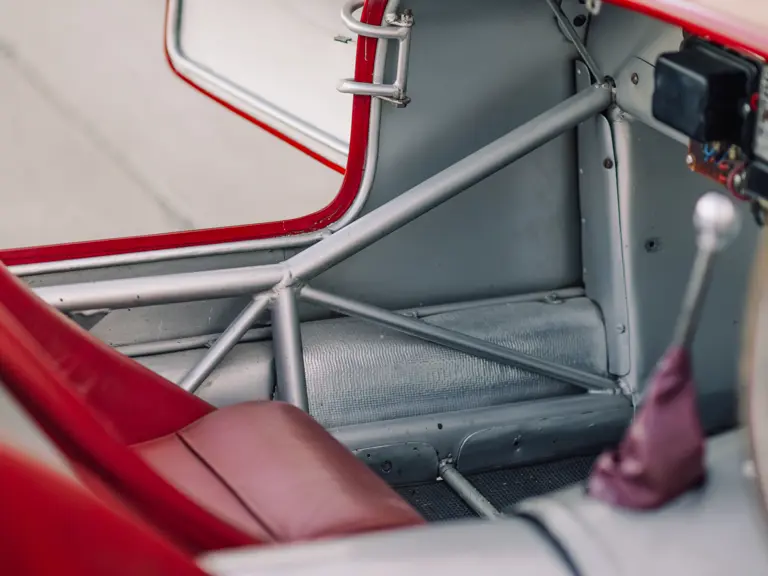
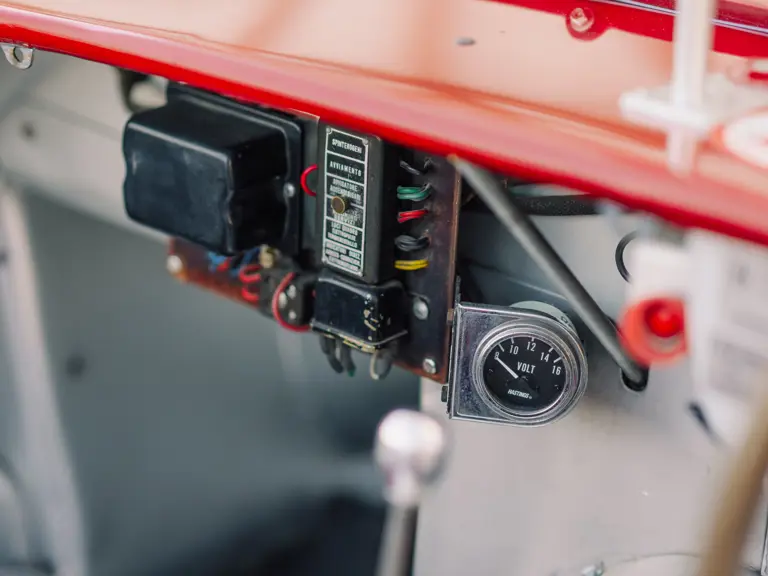
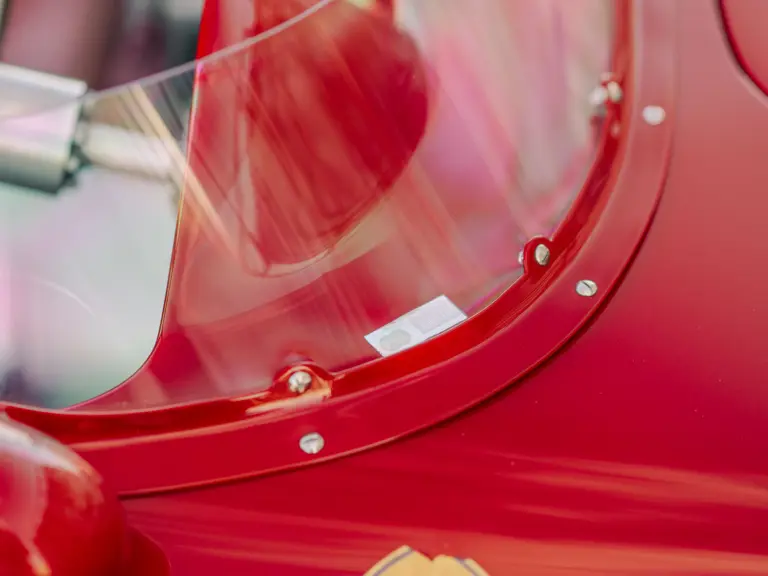
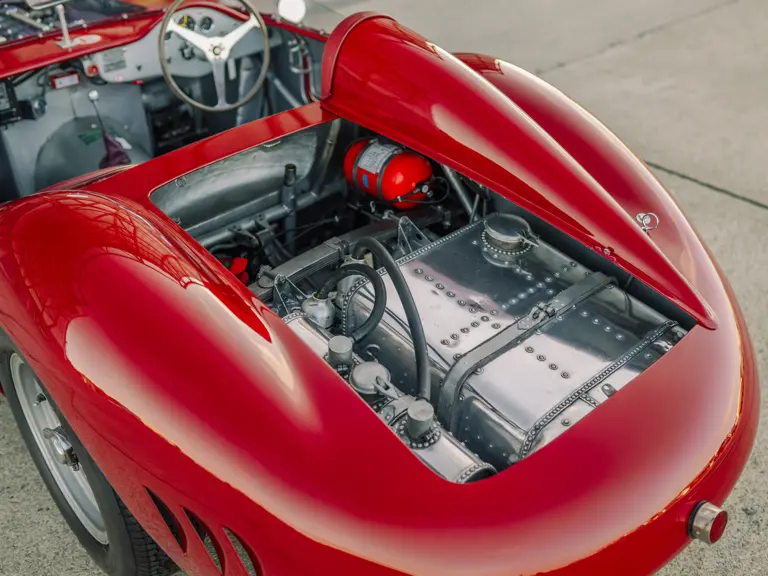
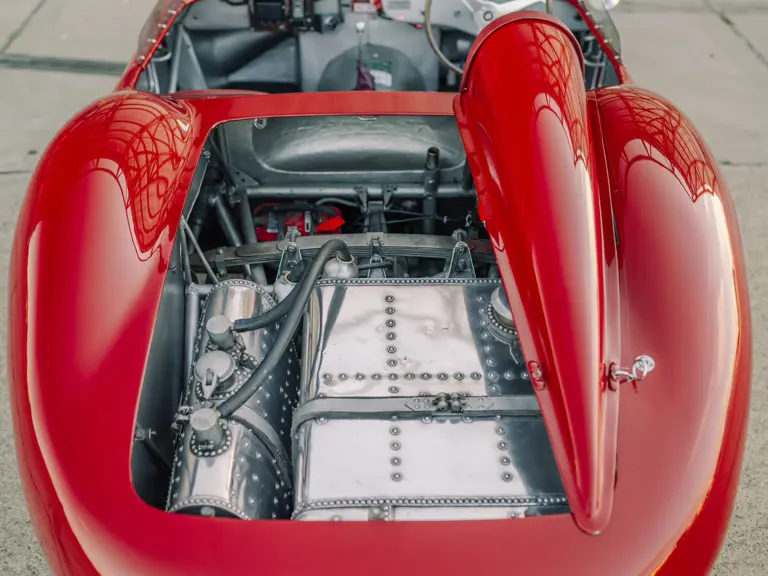
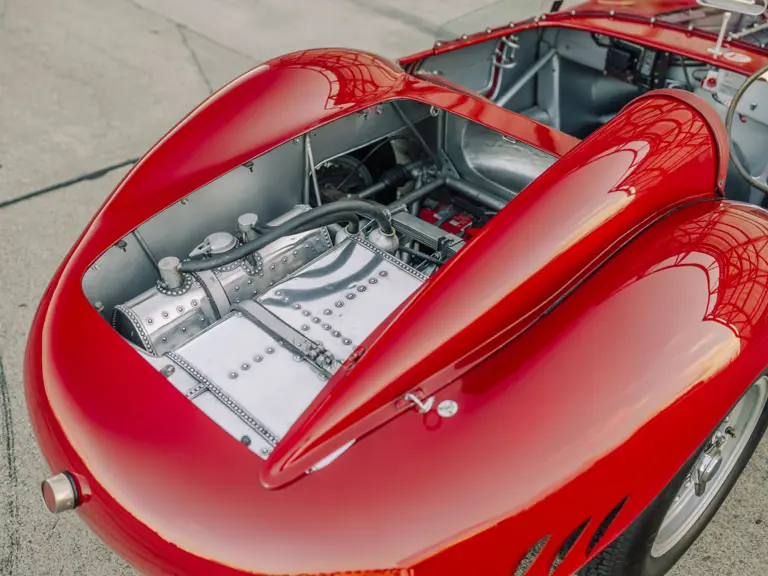
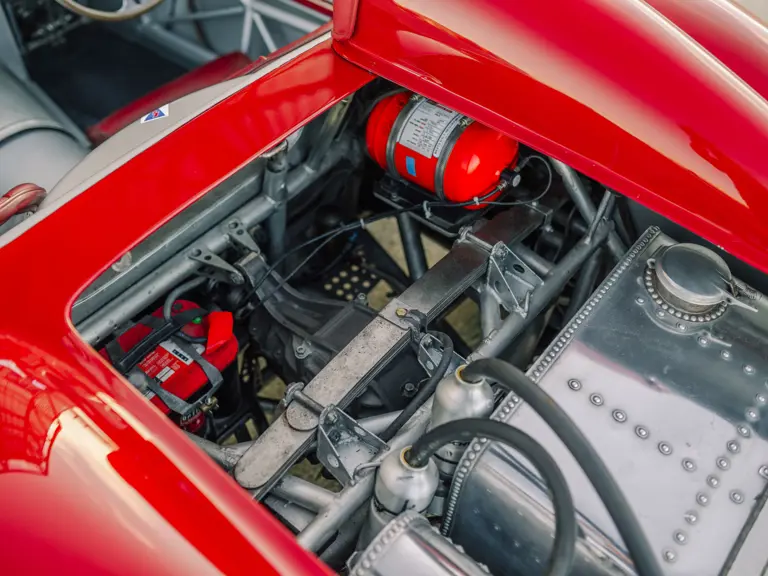
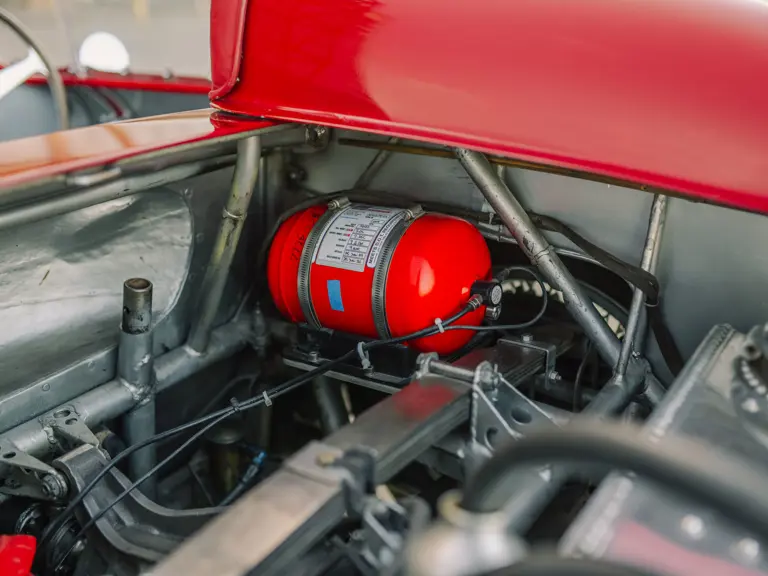
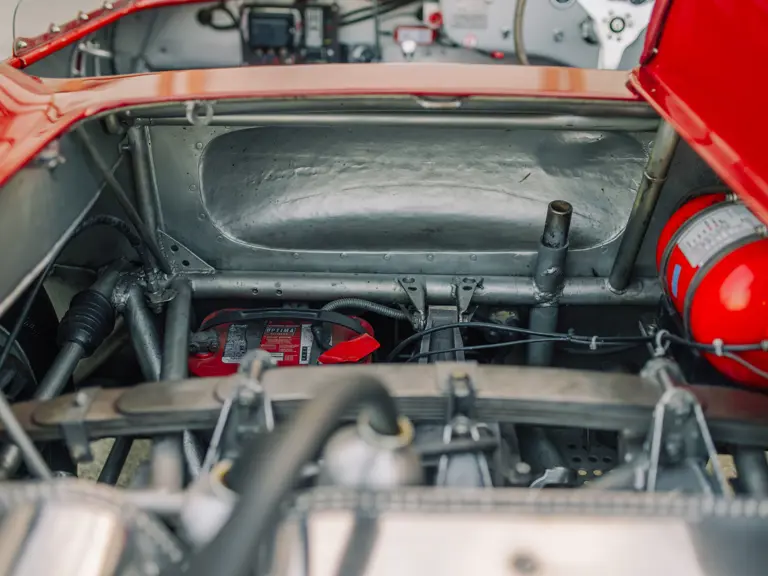
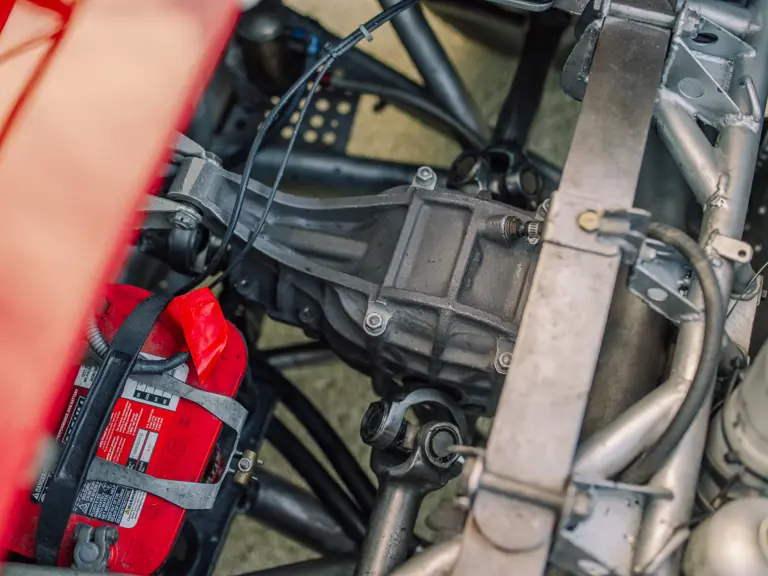
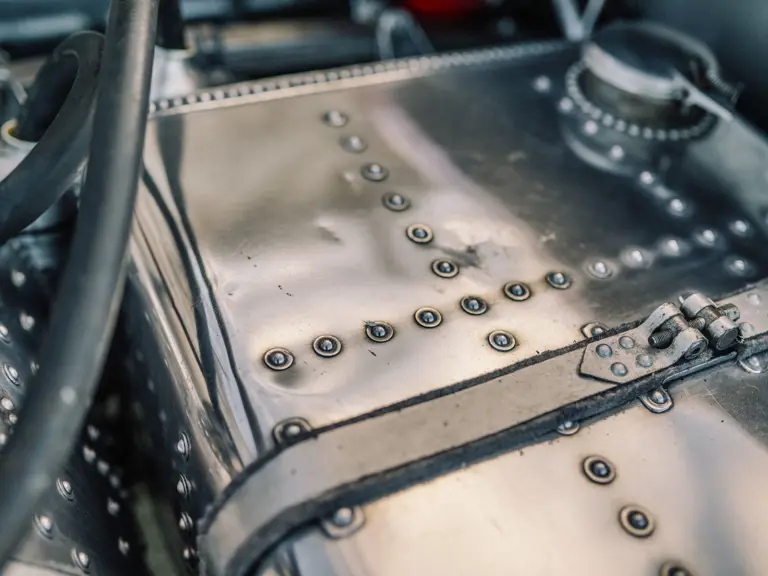
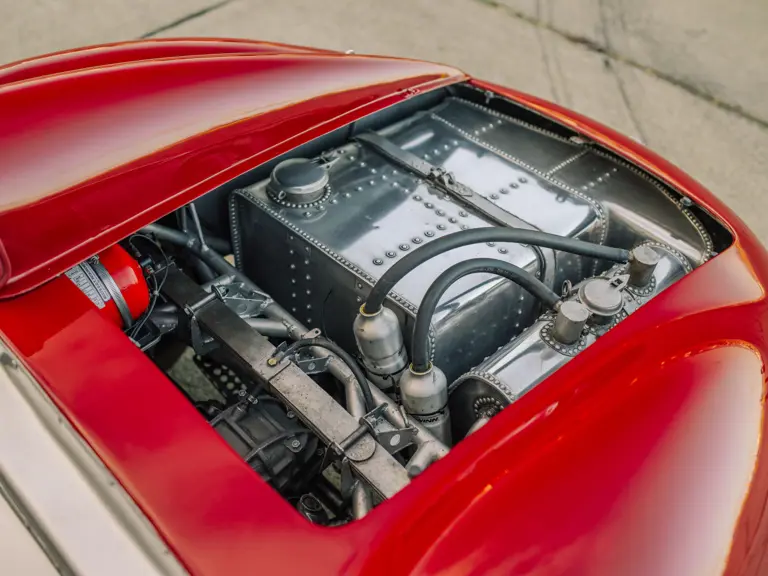
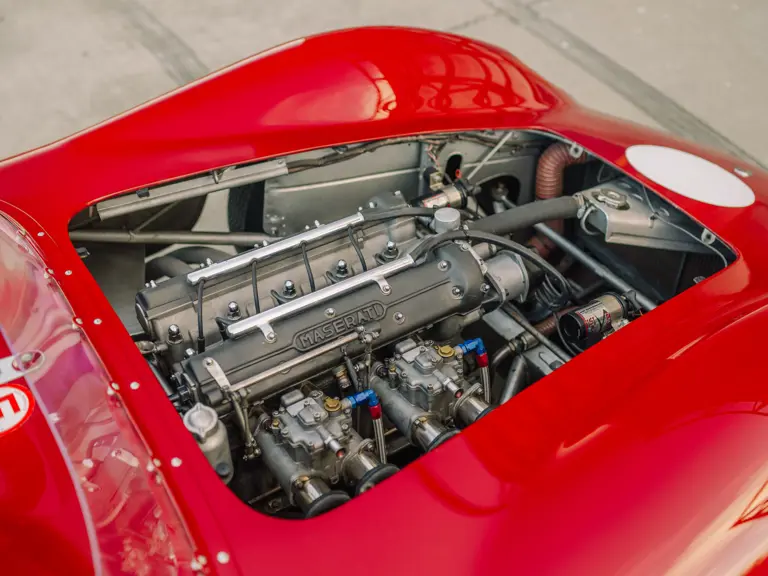
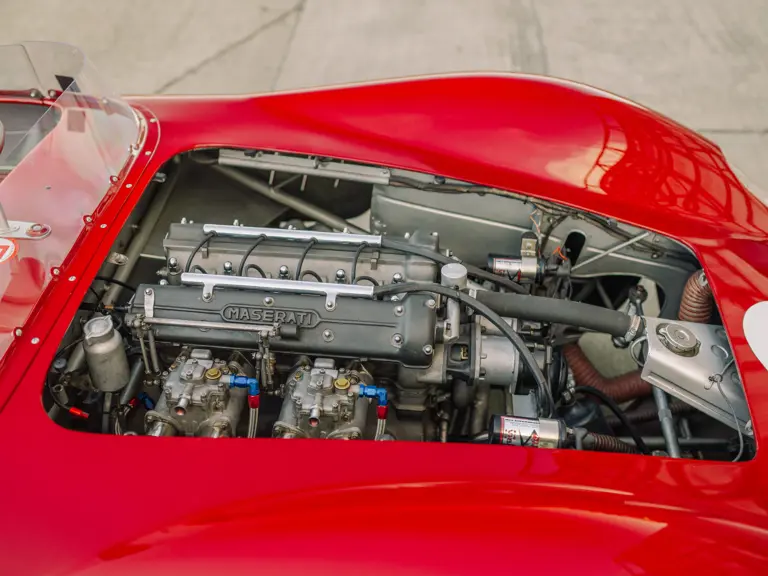
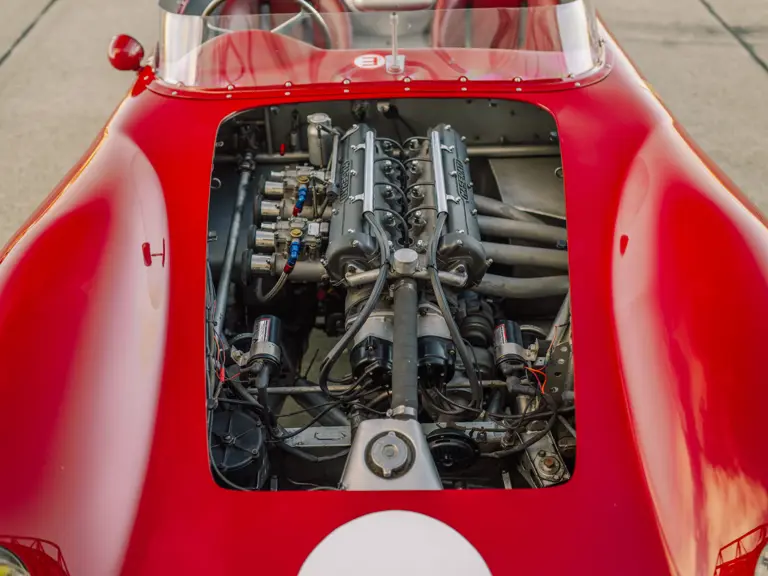
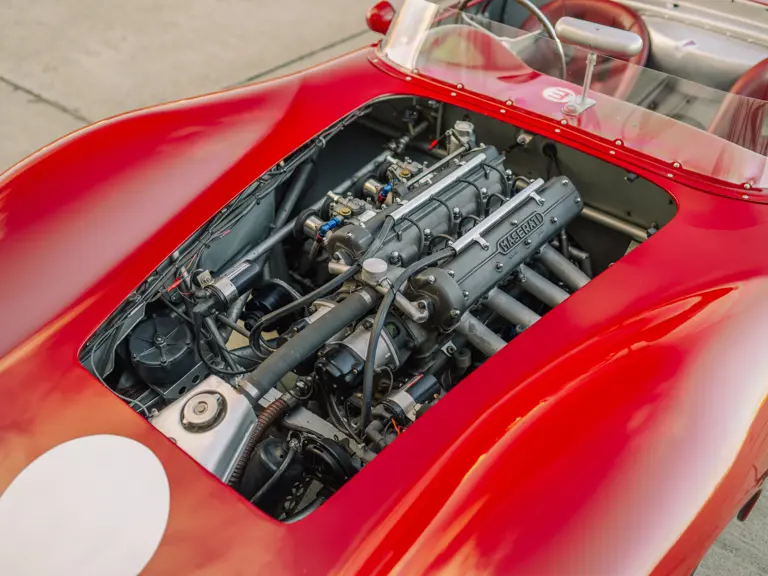
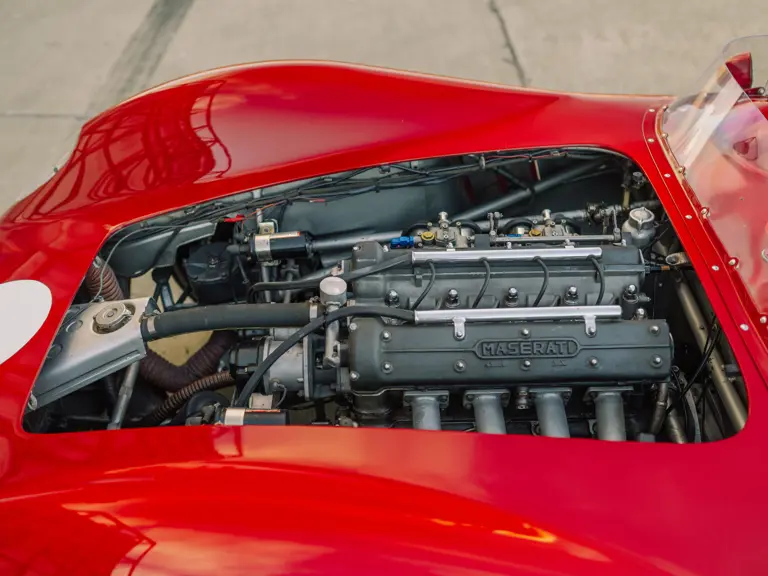
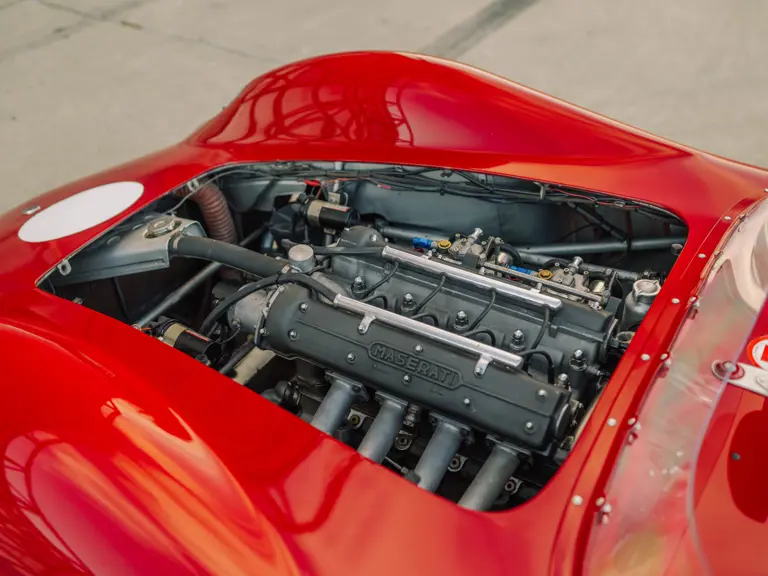
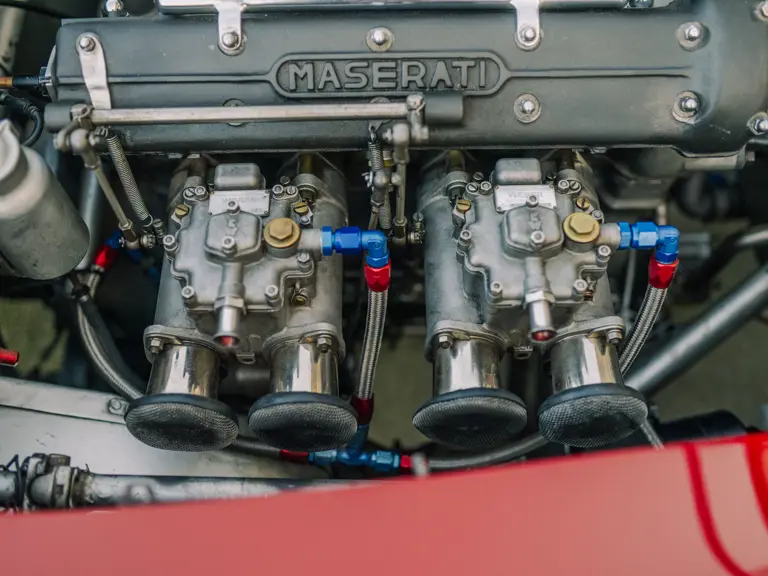
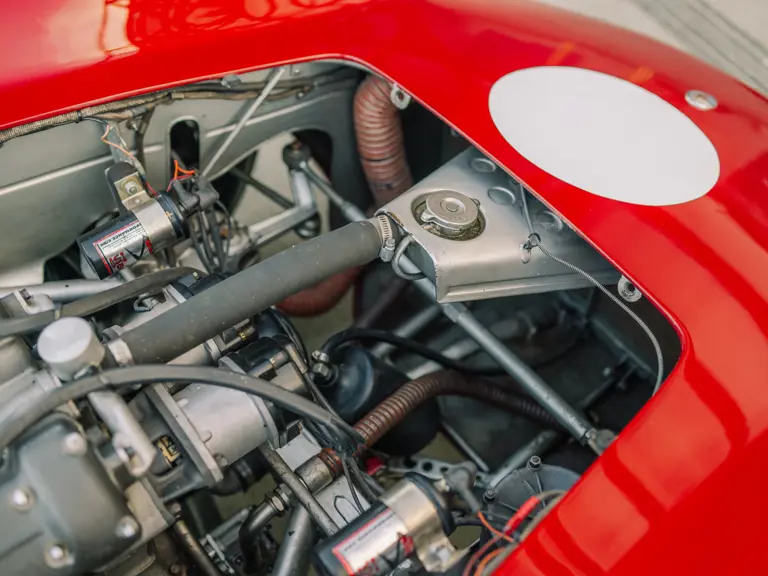
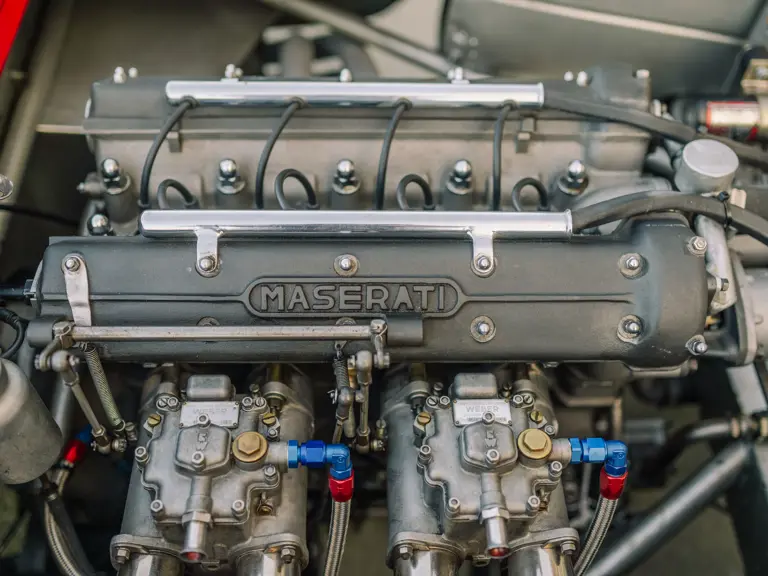
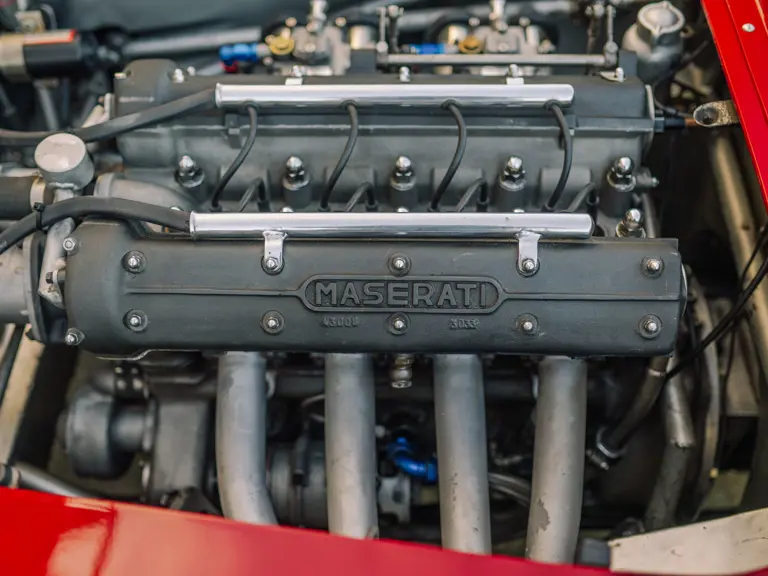
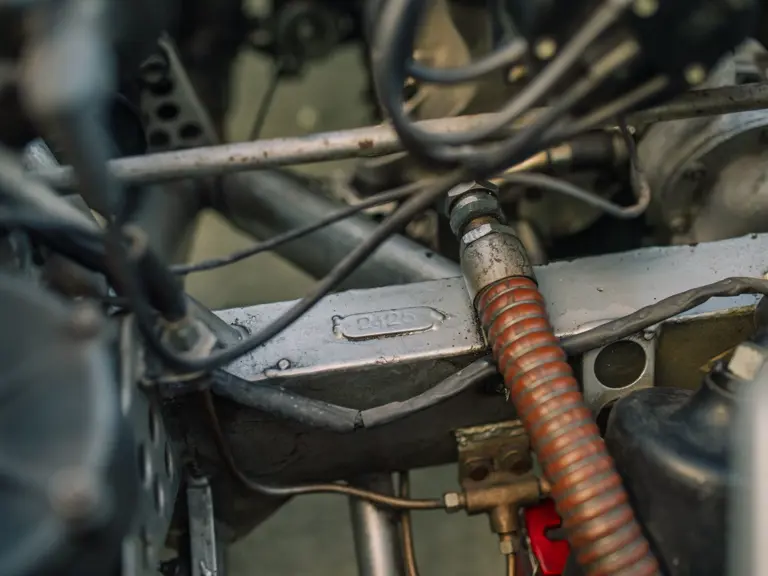
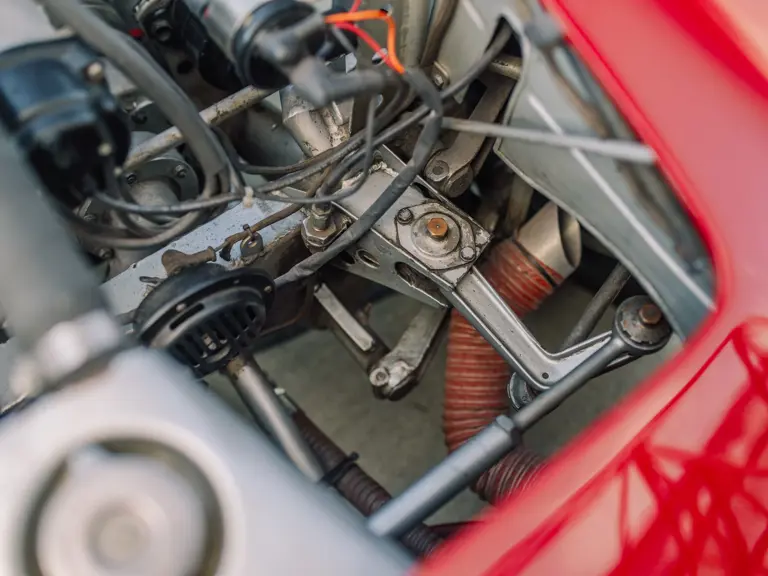
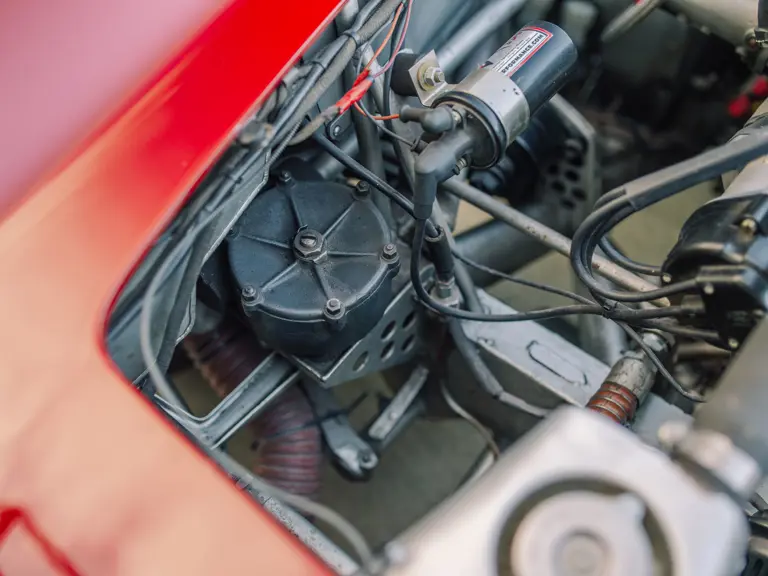
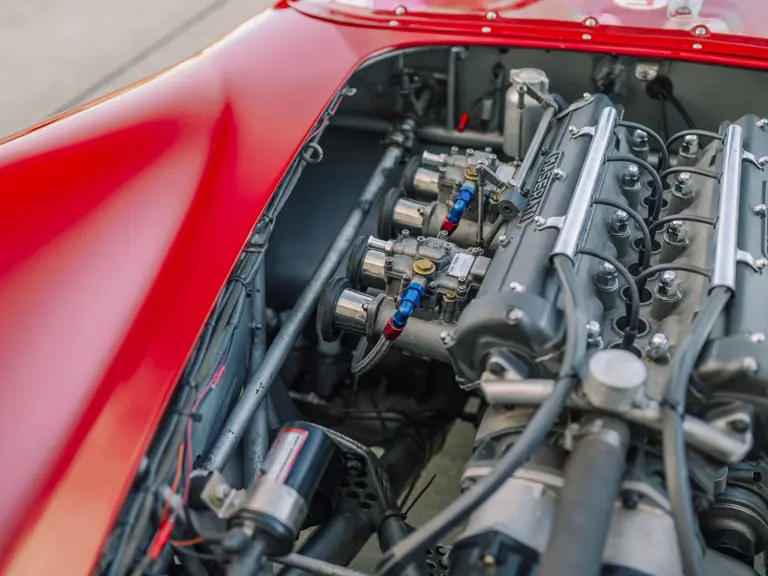
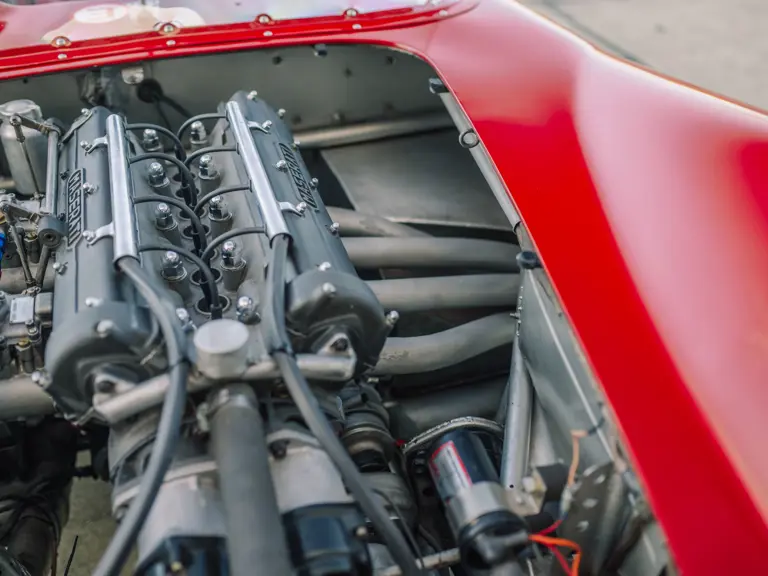
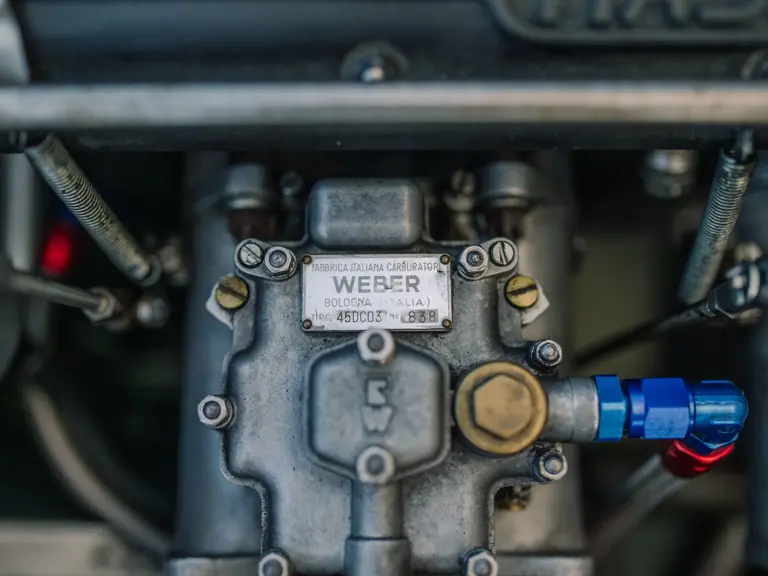
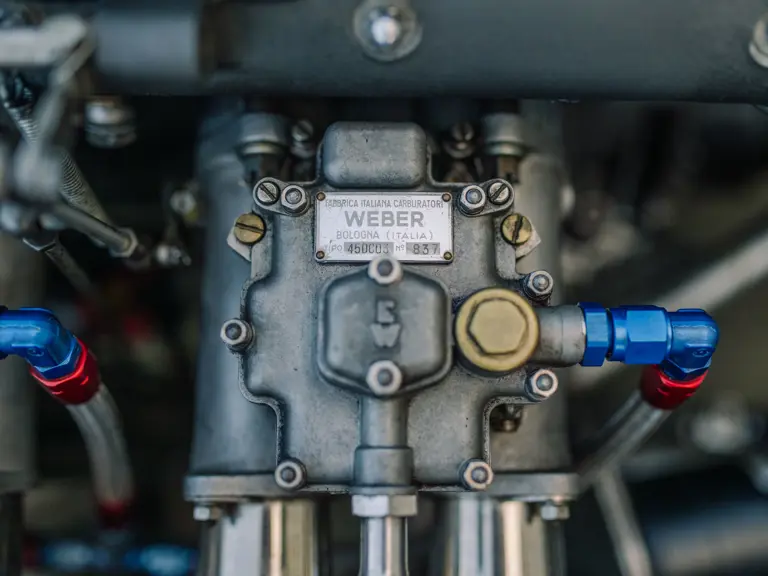
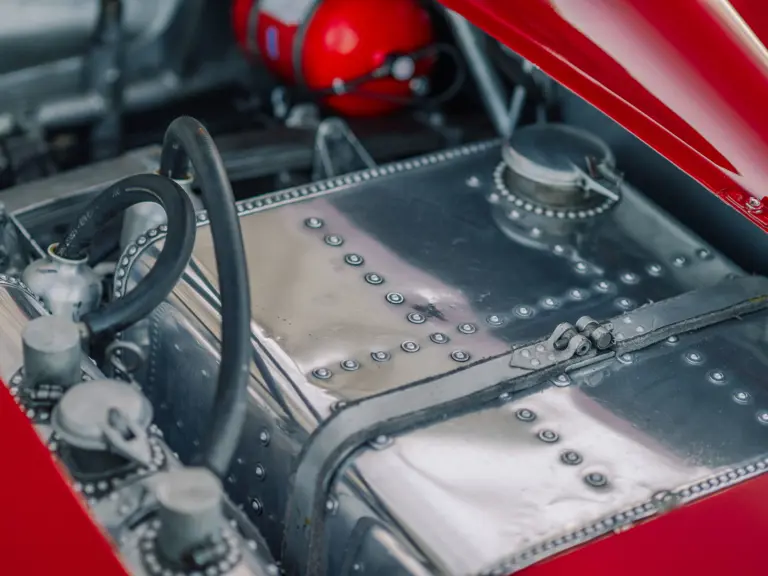
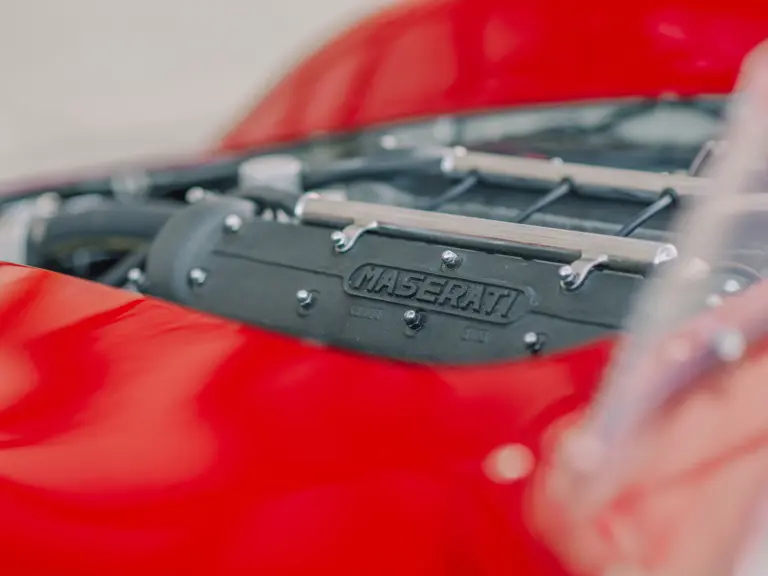
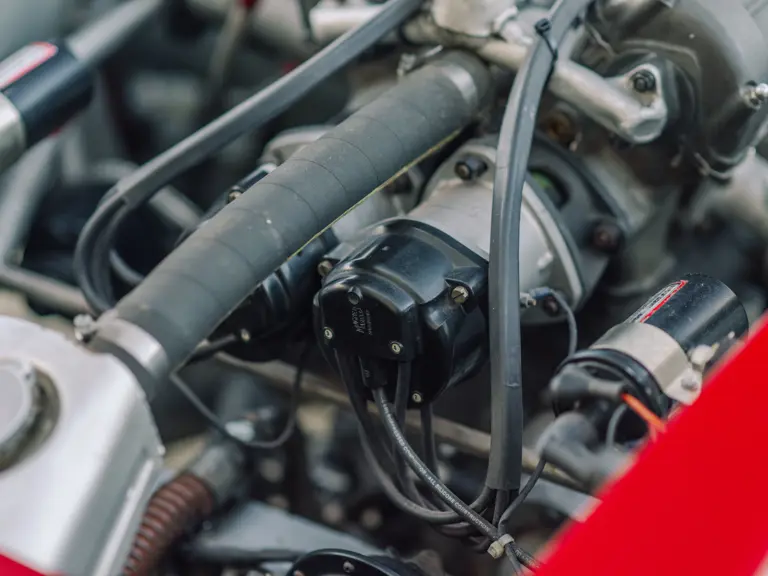
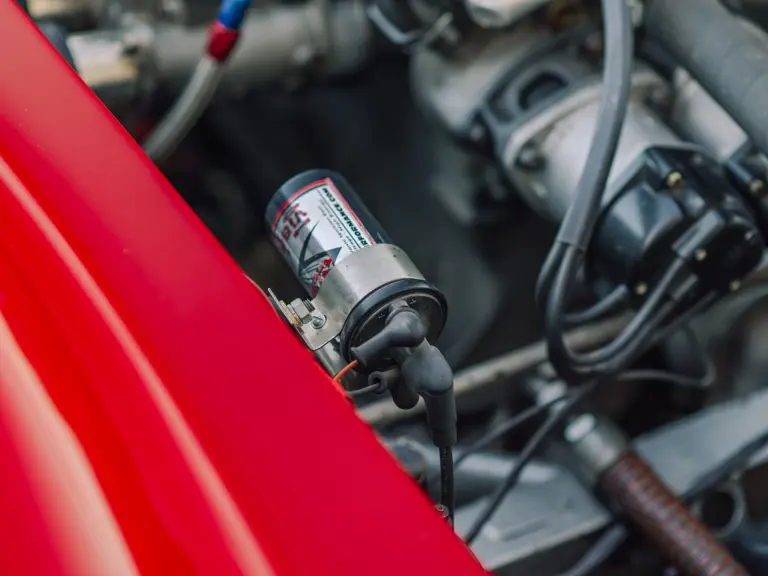
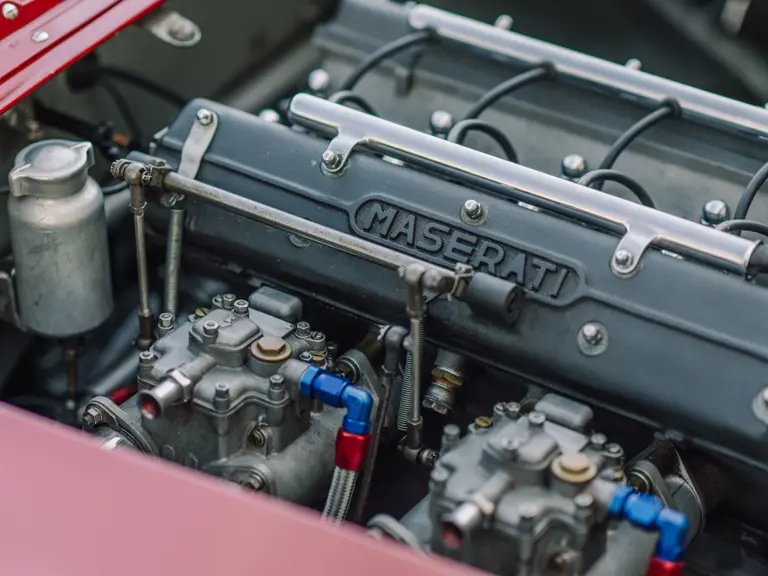
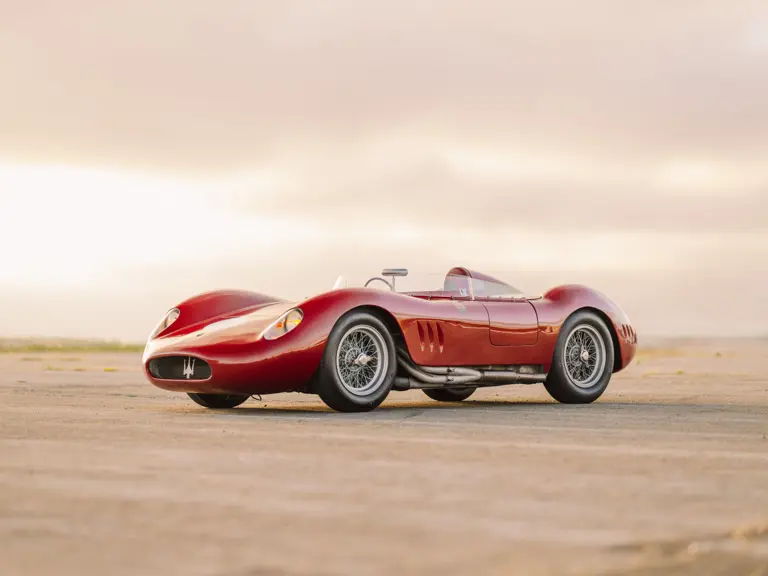
 | California
| California
